City Spurges - DFW area
Subgenus Esula - More identification information here.
E. spathulata - Leaves serrated; no horn-like appendages on the oval glands; fruits warty.

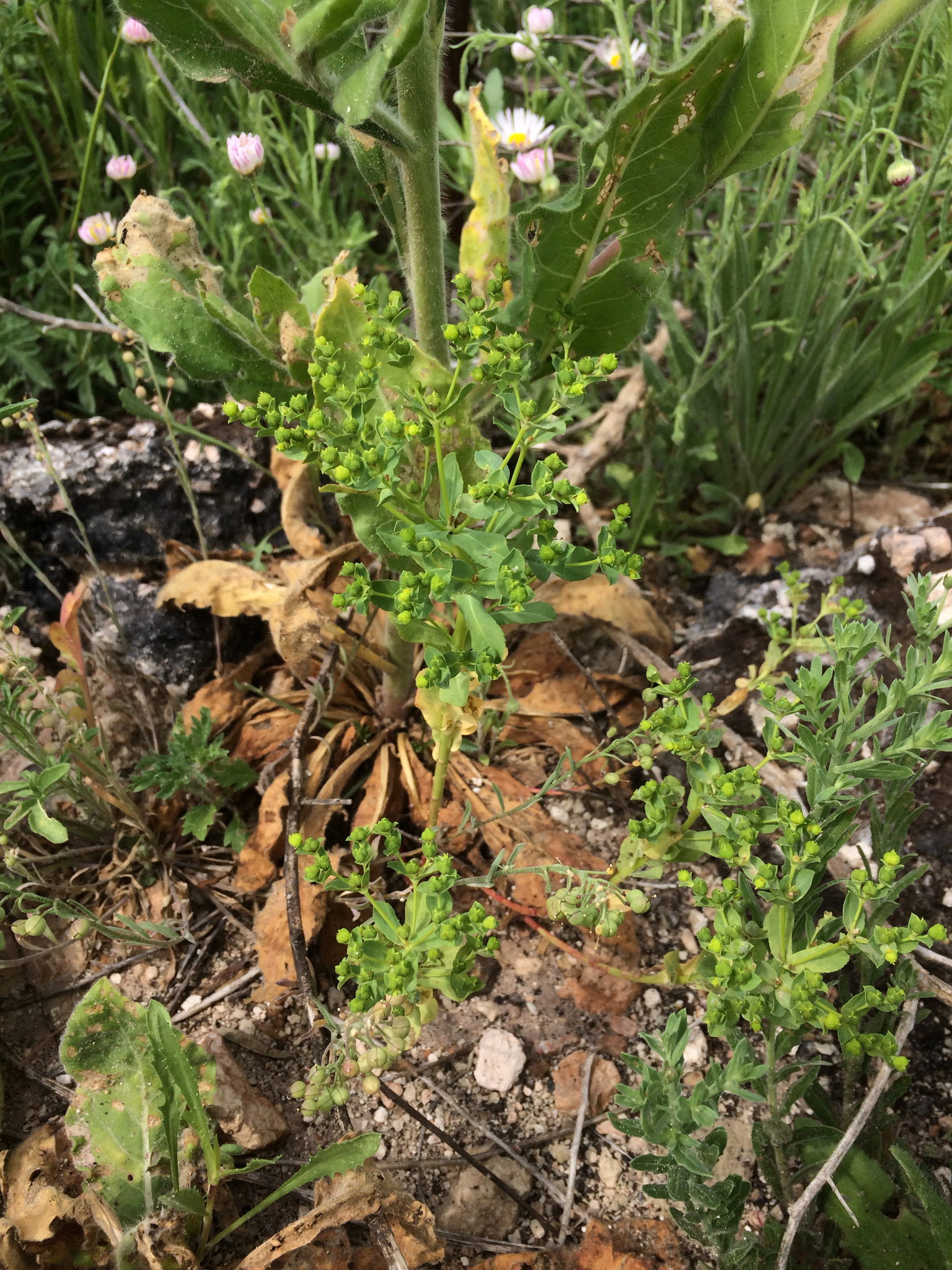
Photo credit (left): Nathan Taylor (click here for observation). Photo credit (right): Nathan Taylor (click here for observation).
E. longicruris - Leaf edges smooth (entire); paired (dichasial) bracts imbricate with rounded tips (apices), not mucronate; glands with horn-like appendages; fruits smooth.
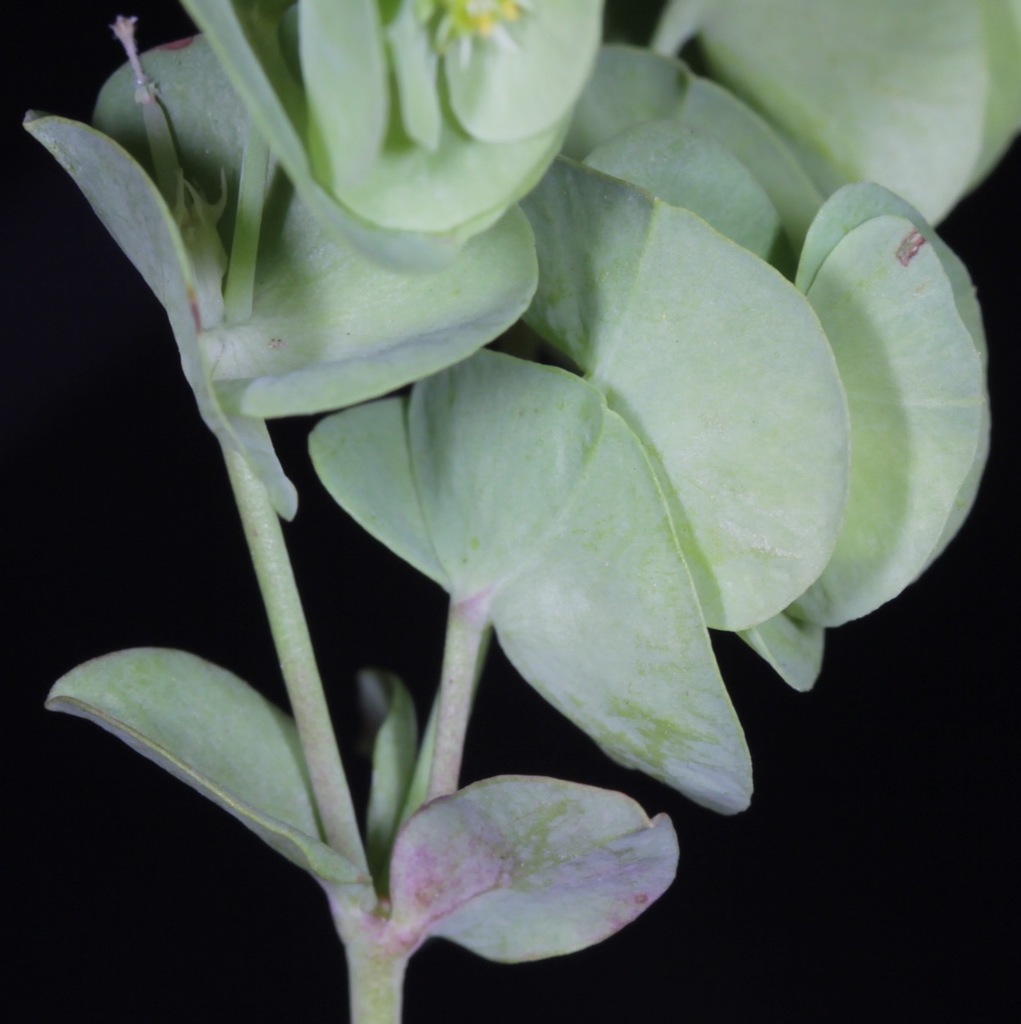

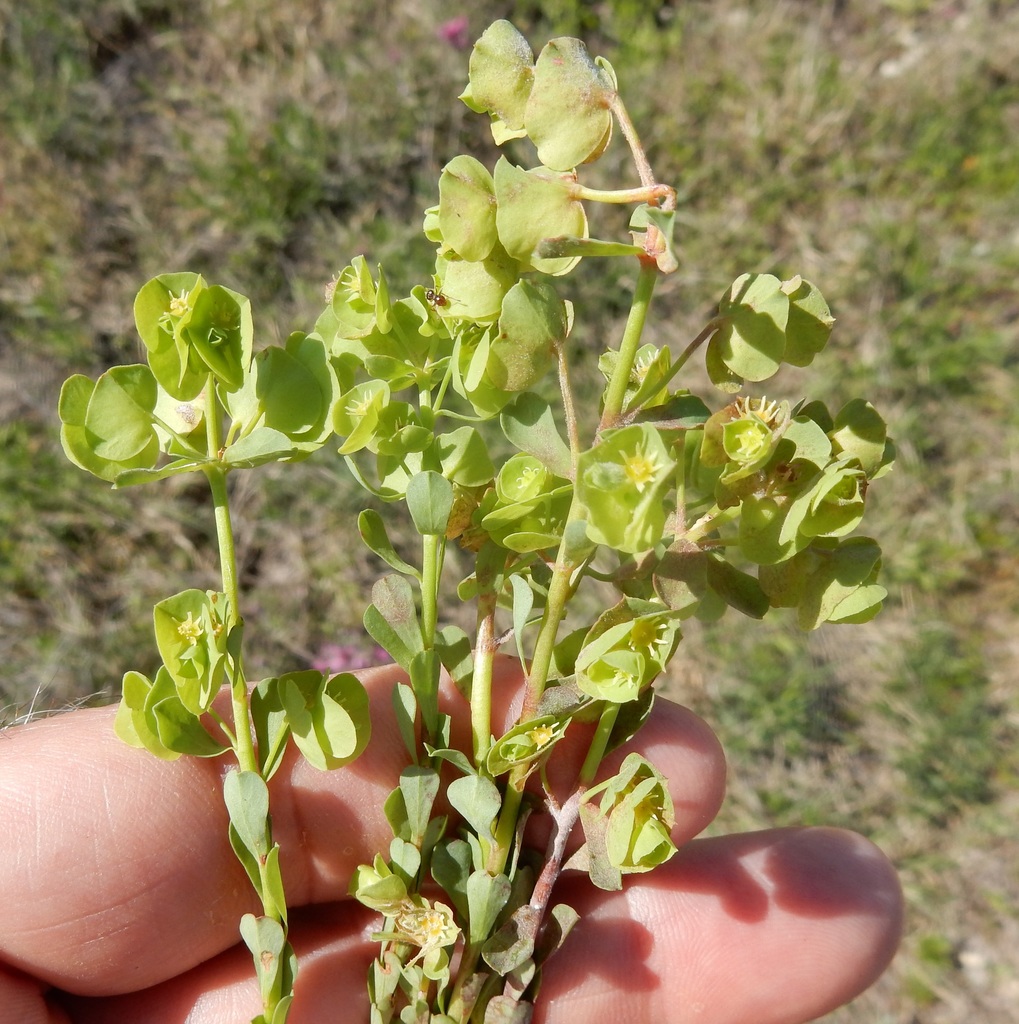
Photo credit (left and middle): Nathan Taylor (click here for observation). Photo credit (right): Bob O'Kennon (click here for observation).
E. tetrapora - Leaf edges smooth (entire); paired (dichasial) bracts with short, abrupt point (mucronate); stems upright, unbranched at the base; glands with horn-like appendages; fruits smooth.

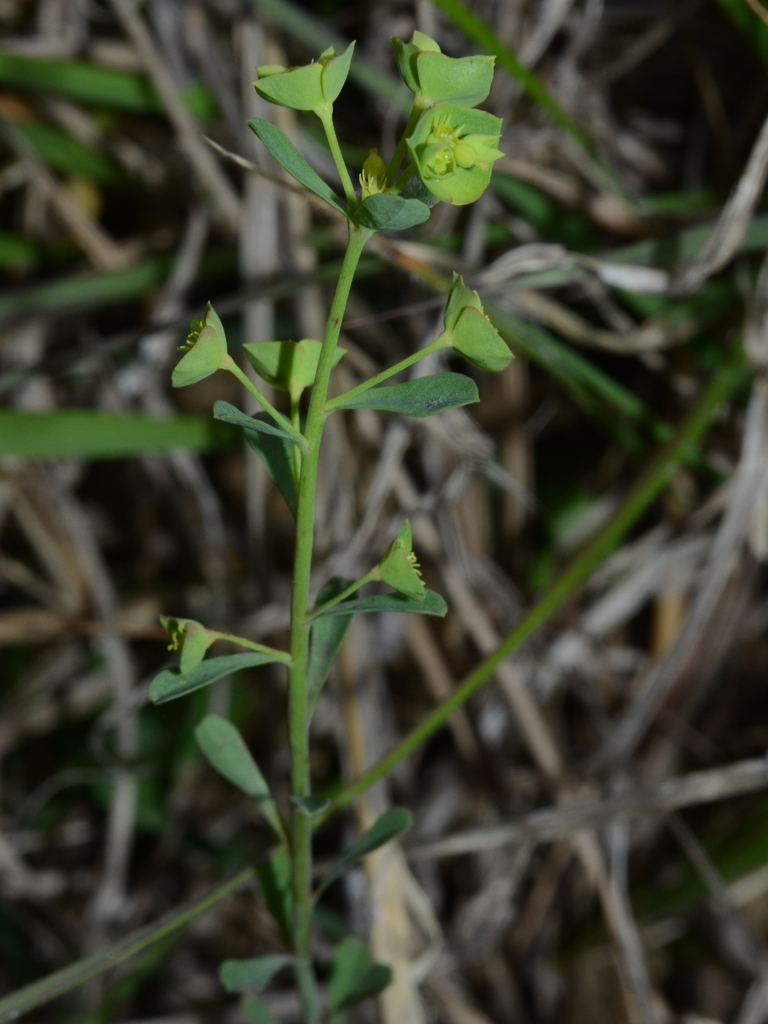
Photo credit (left): Sam Kieschnick (click here for observation). Photo credit (right): markg (click here for observation).
Section Poinsettia
Lower leaves alternate, stems glabrous
E. cyathophora - Bracts sometimes red basally, but often completely green in the DFW area, they may be linear or quite broad.
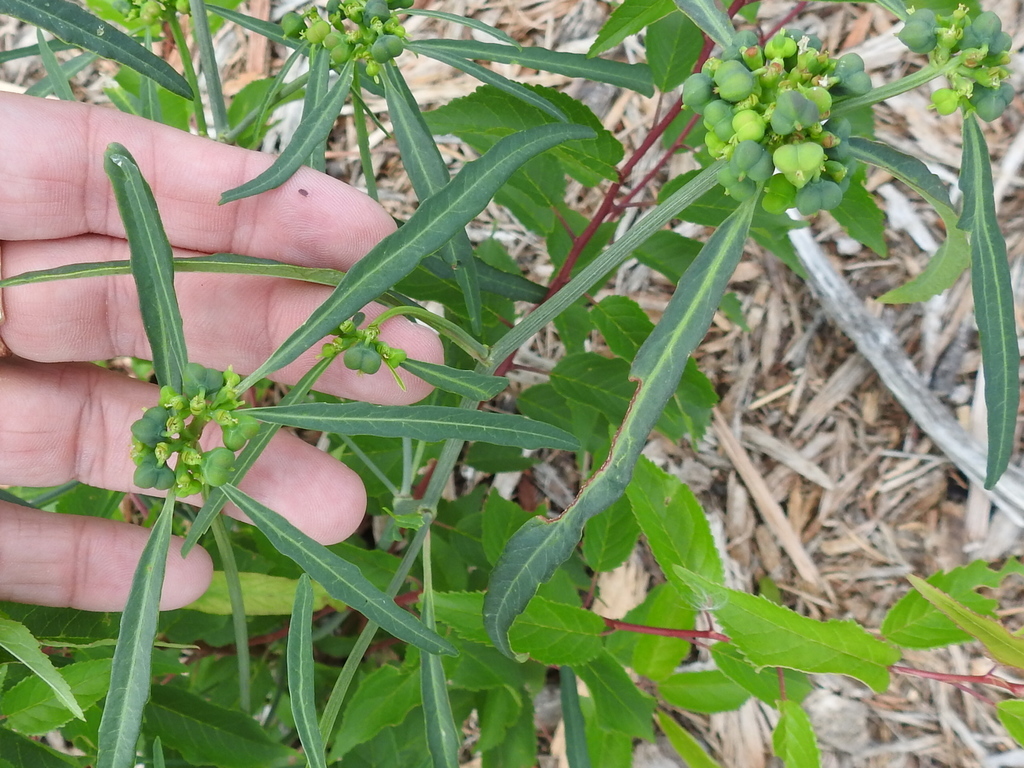
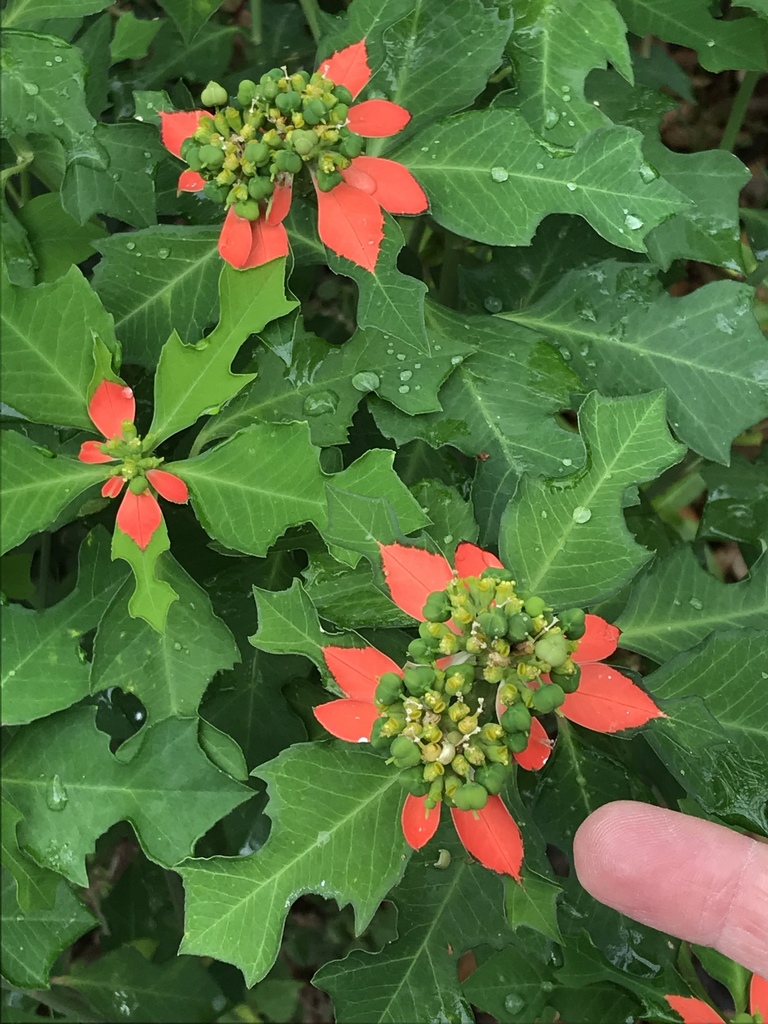
Photo credit (left): Sam Kieschnick (click here for observation). Photo credit (right): marytmn (click here for observation).
Lower leaves opposite, stems hairy
E. davidii - Seeds slightly angled, tubercles unevenly distributed.
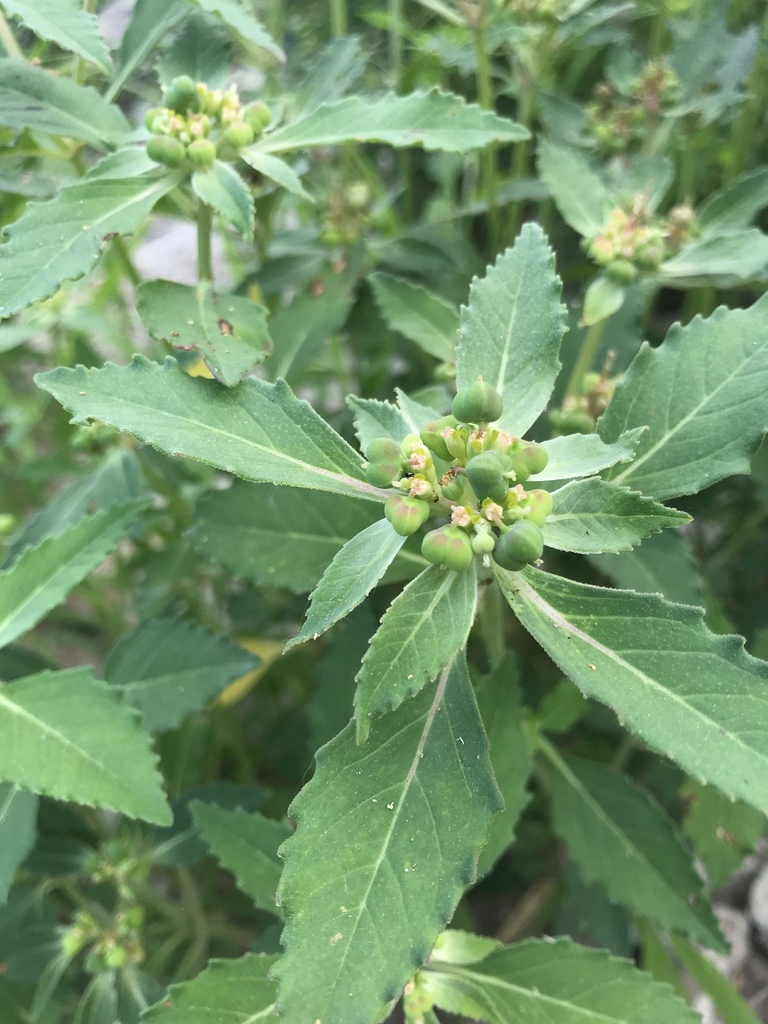
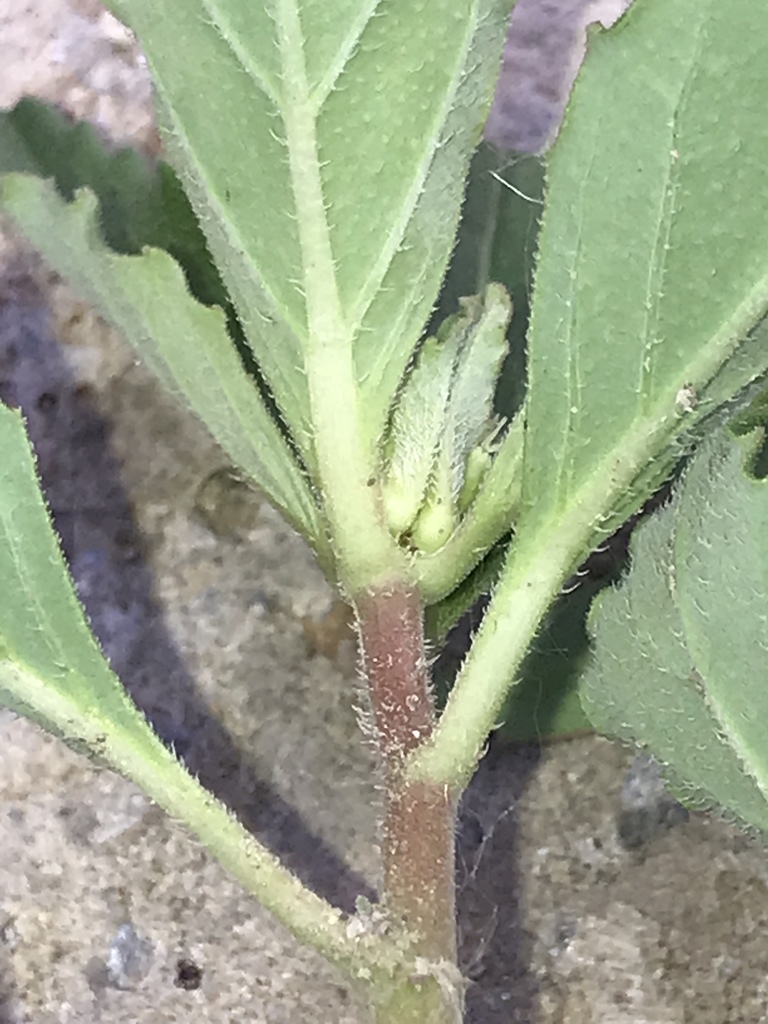
Photo credit: Mark Mayfield (click here for observation).
E. dentata - Seeds essentially round in crossection, tubercles evenly distributed.
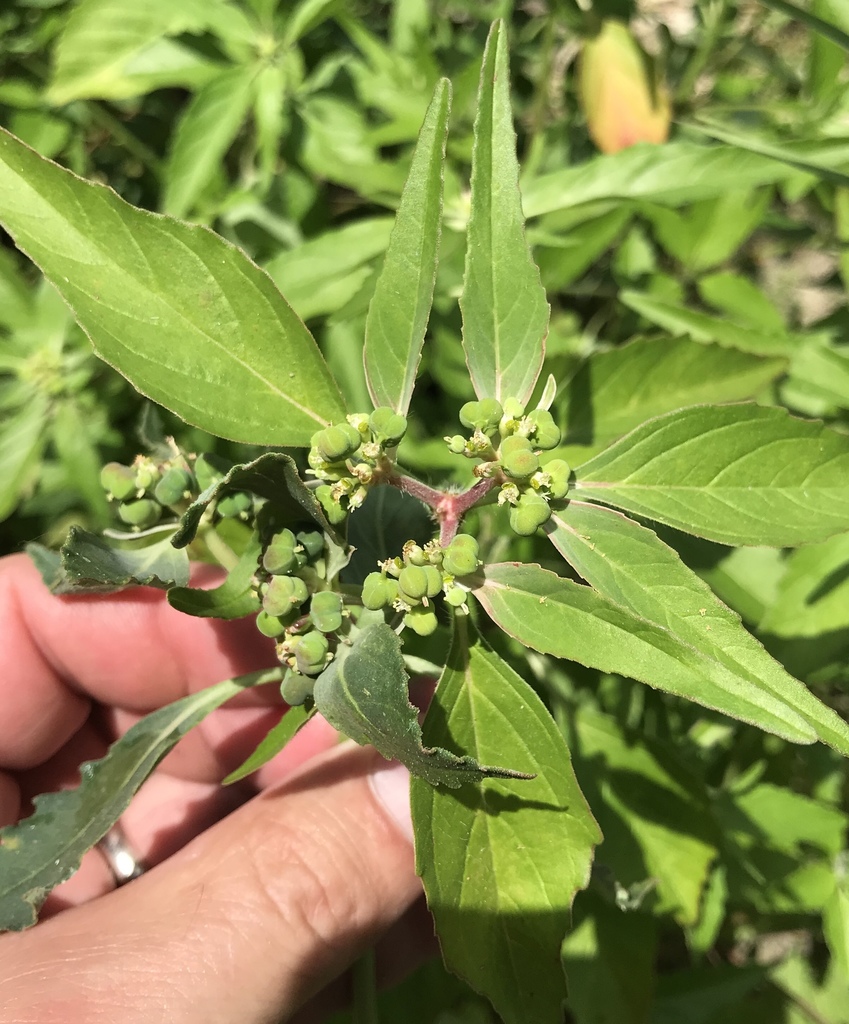
Photo credit: Mark Mayfield (click here for observation).
Section Alectoroctonum
Showy bracts with white edges; showiest part of the plant the leaves and bracts.
E. bicolor - Uppersides of leaves and bracts hairy; more information here.
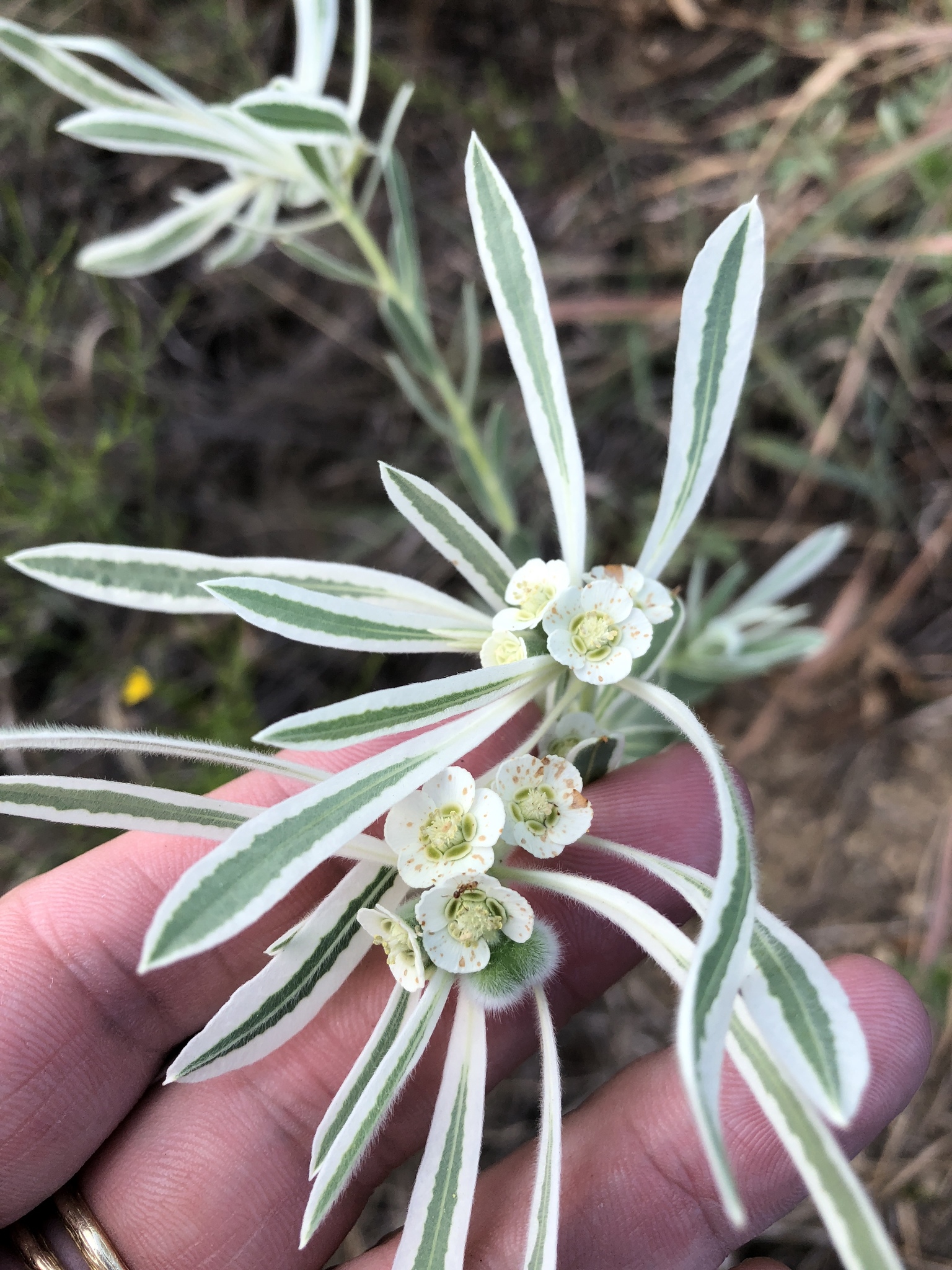

Photo credit (left): Sam Kieschnick (click here for observation). Photo credit (right): mmkimberly (click here for observation).
E. marginata - Uppersides of leaves and bracts glabrous; more information here.
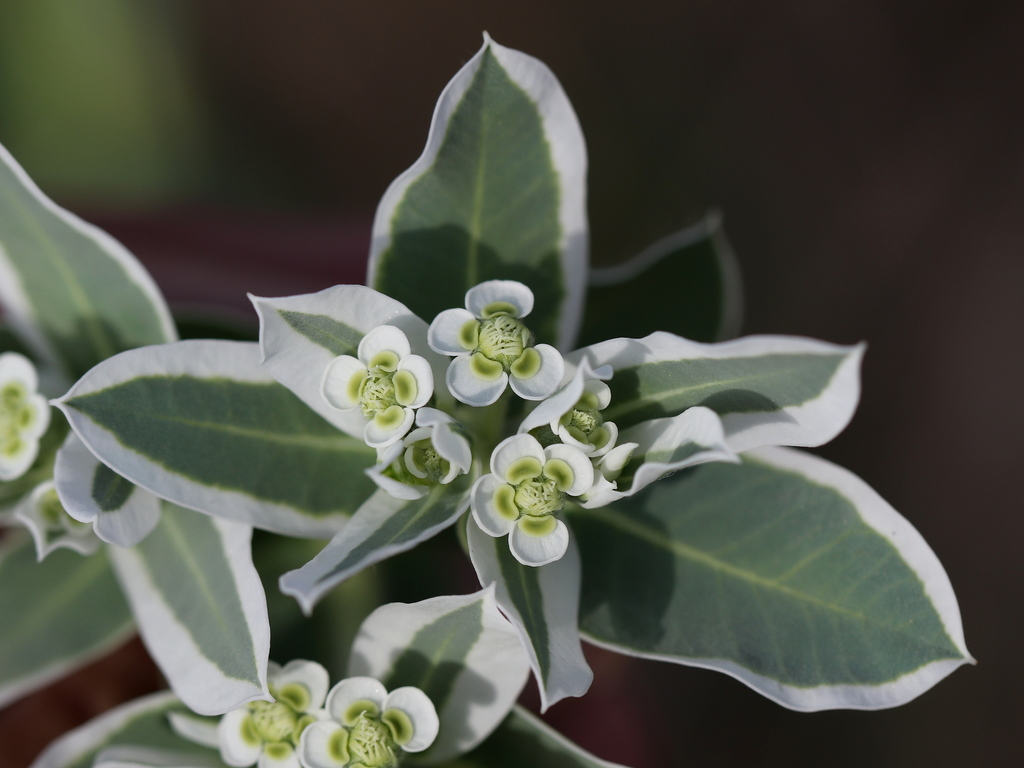
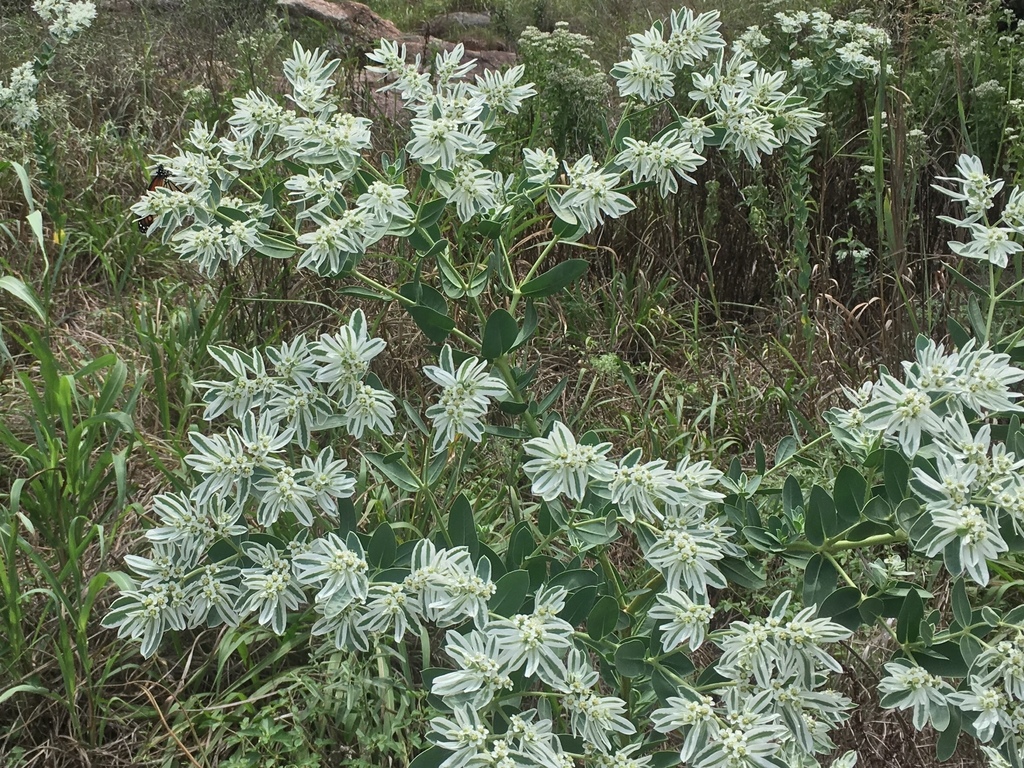
Photo credit (left): Jay Keller (click here for observation). Photo credit (right): niamora (click here for observation).
Bracts small or obsolete, not showy; showiest parts of the plant the petal-like appendages of the flower-like cyathia.
E. corollata
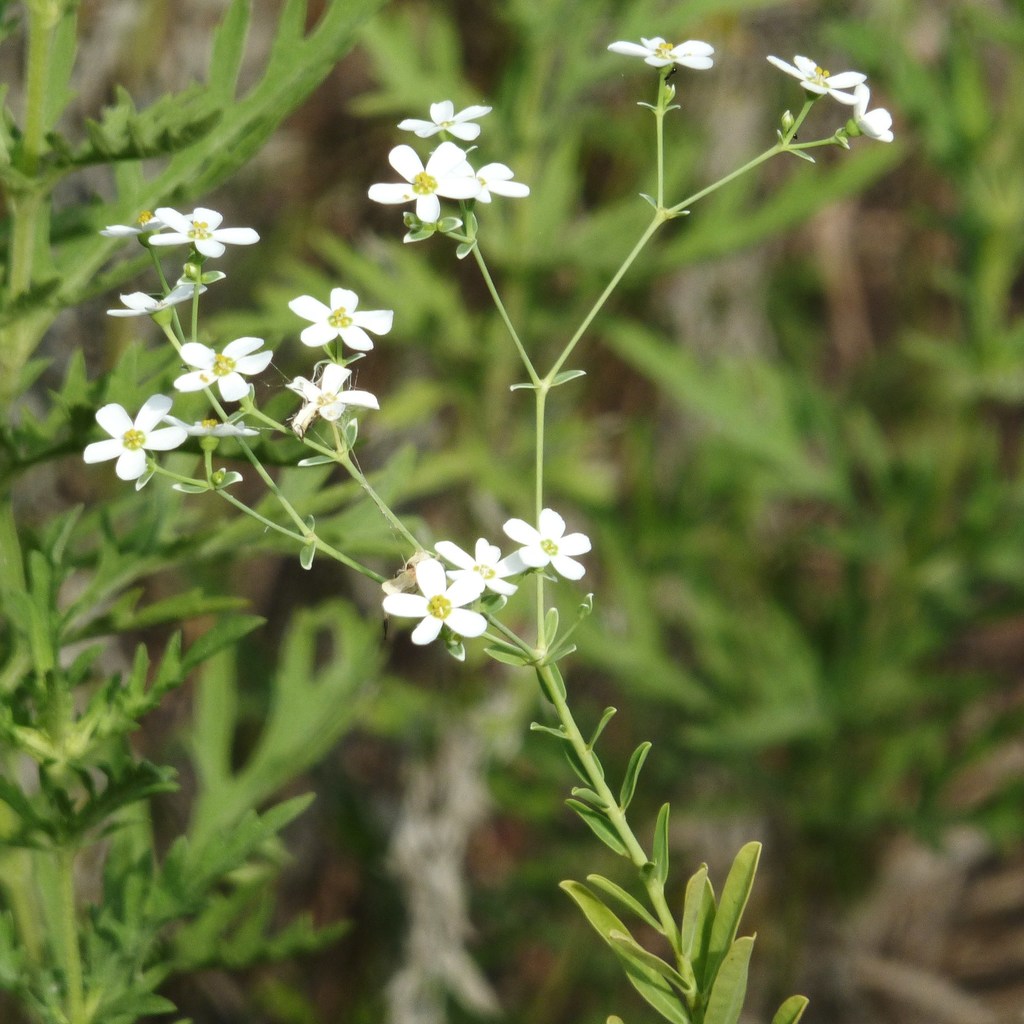
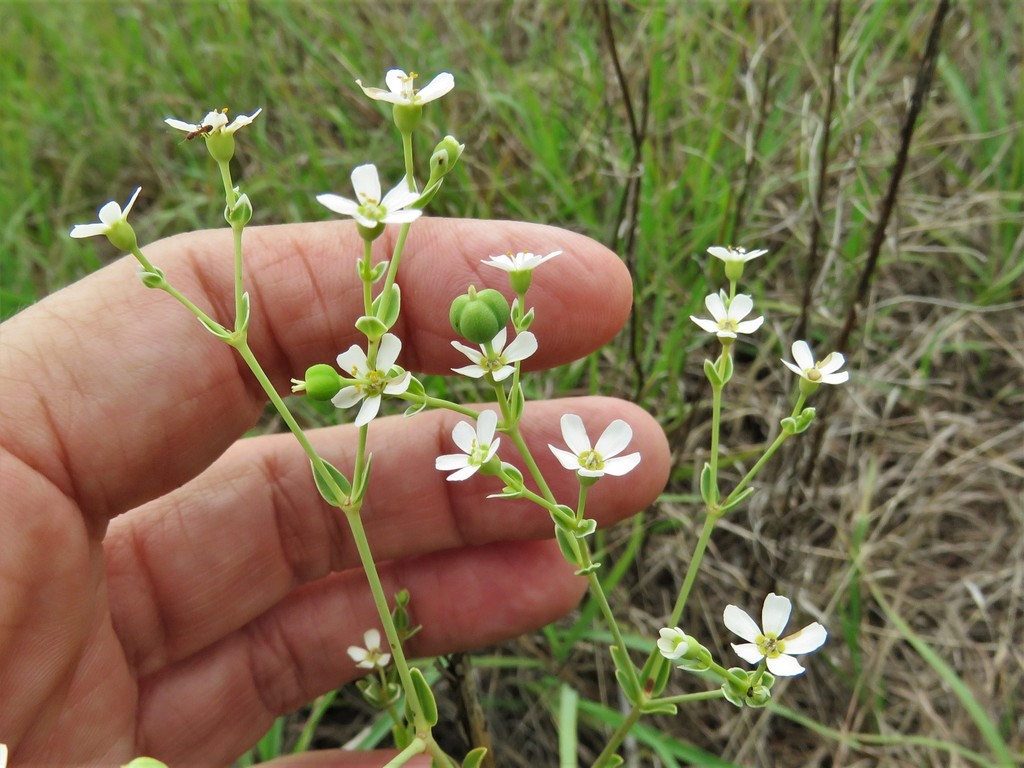
Photo credit (left): sehnature (click here for observation). Photo credit (right): Annika Lindqvist (click here for observation).
Section Anisophyllum
Also read here.
E. hypericifolia - Identification information here.

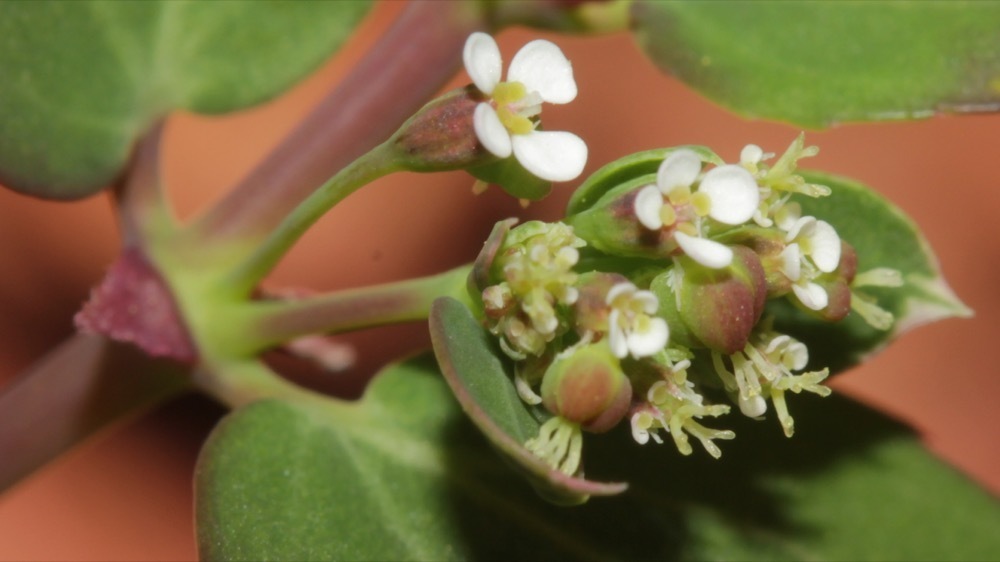
Photo credit (left): Meghan Cassidy (click here for observation). Photo credit (right): Nathan Taylor (click here for observation).
E. hyssopifolia - Identification information here.
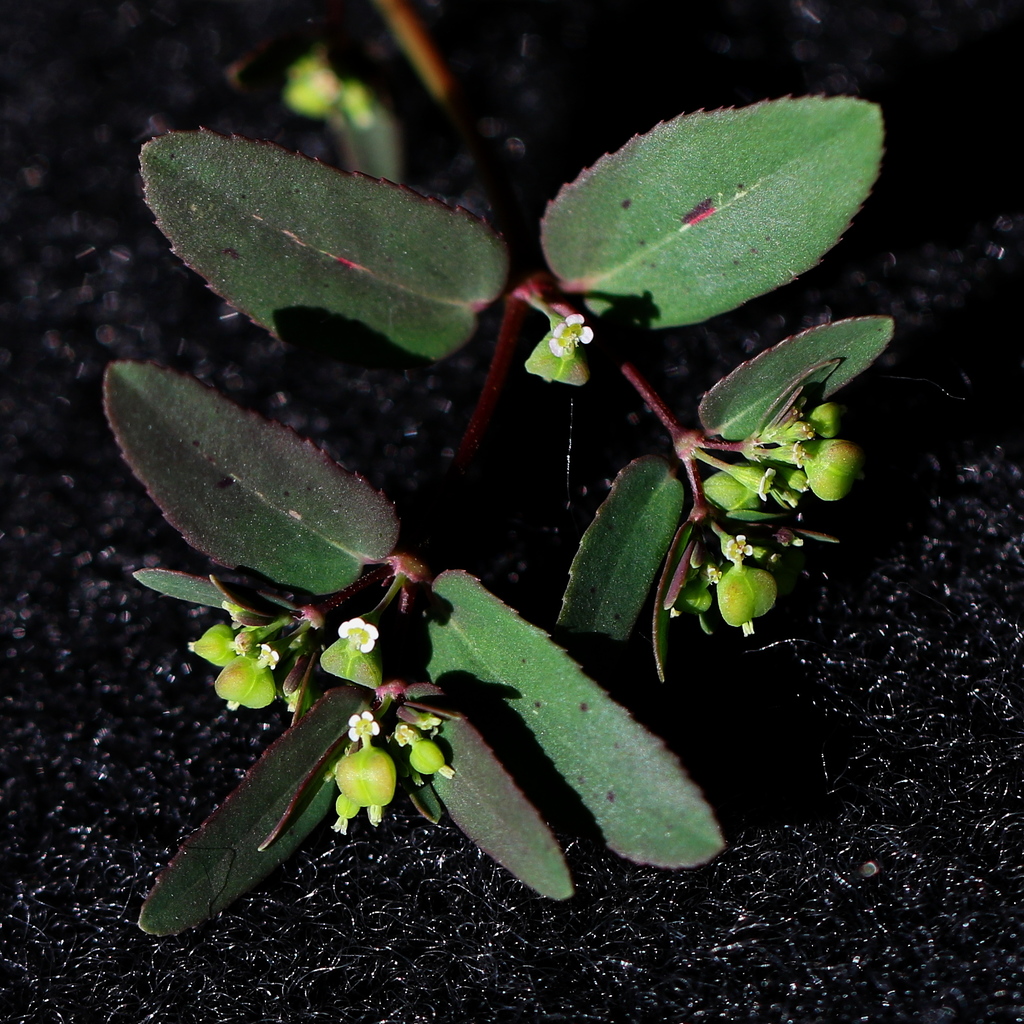

Photo credit (left): Jay Keller (click here for observation). Photo credit (right): Nathan Taylor (click here for observation). Photo credit (right): Nathan Taylor (click here for observation).
E. nutans - Identification information here.
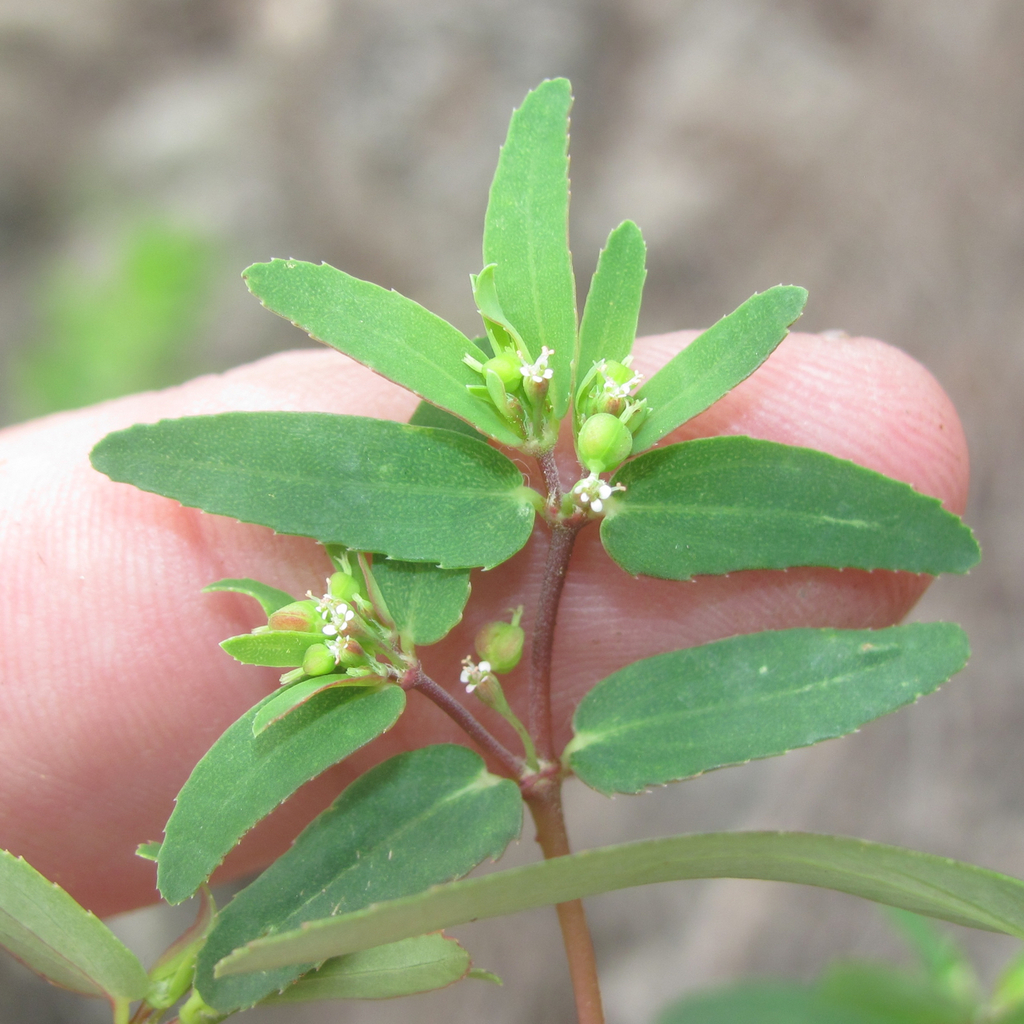
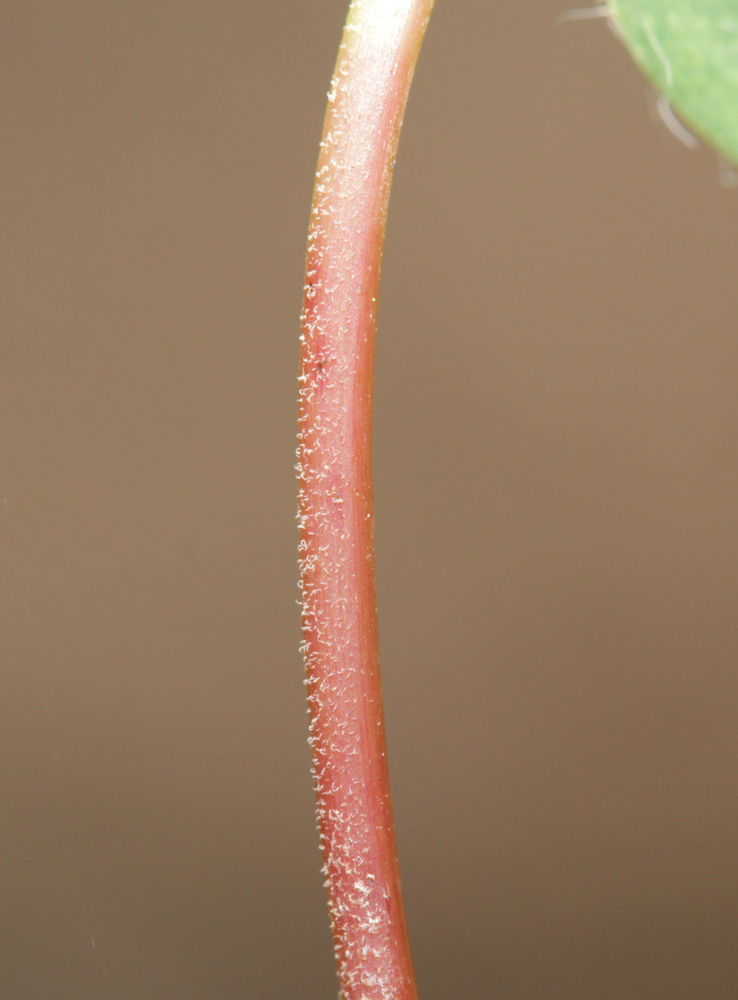
Photo credit (left): Chuck Sexton (click here for observation). Photo credit (right): Nathan Taylor (click here for observation).
E. hirta - Identification information in the comments section here.
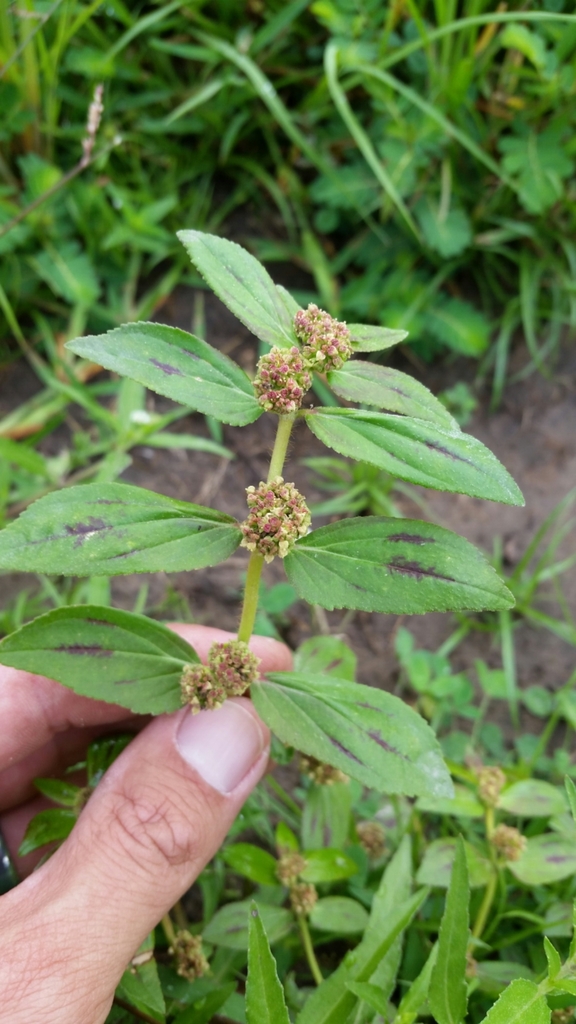

Photo credit (left): Jed Aplaca (click here for observation). Photo credit (right): Nathan Taylor (click here for observation).
E. ophthalmica - Identification information here.
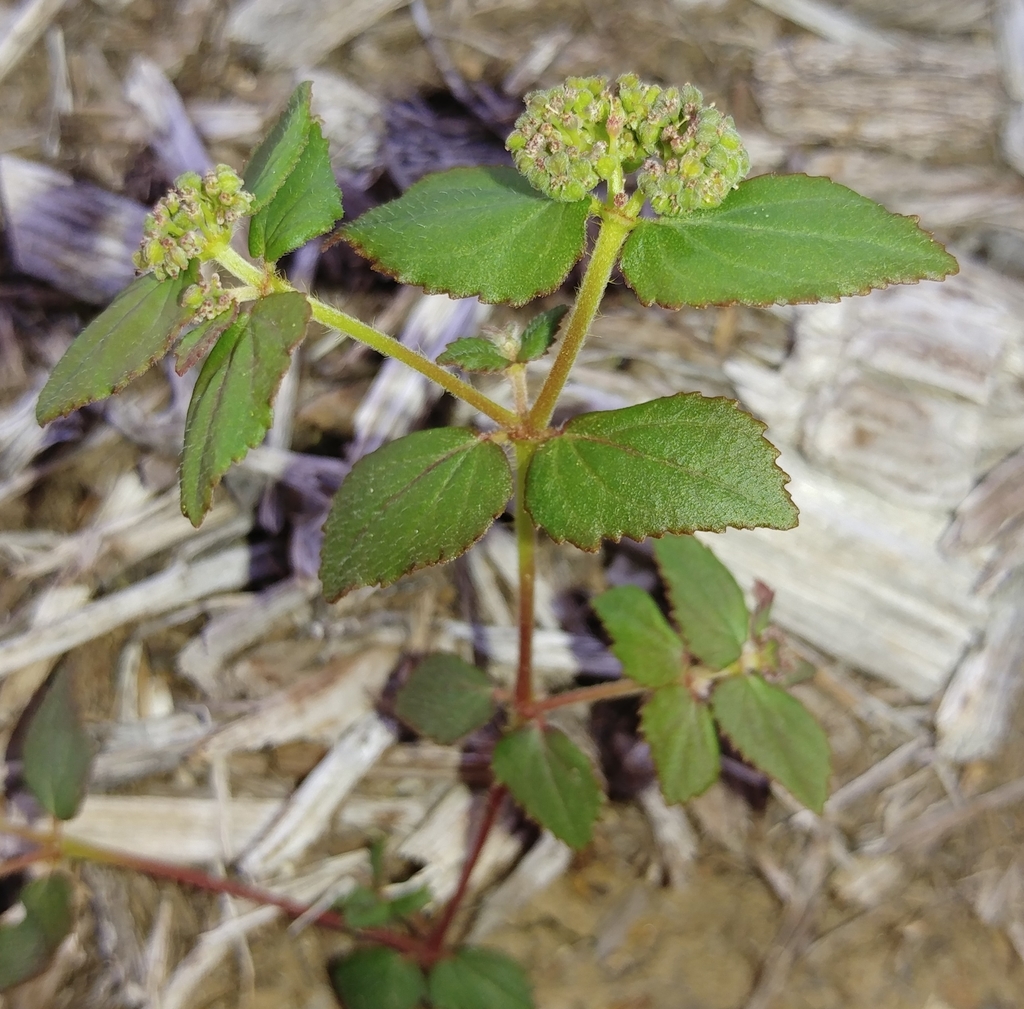
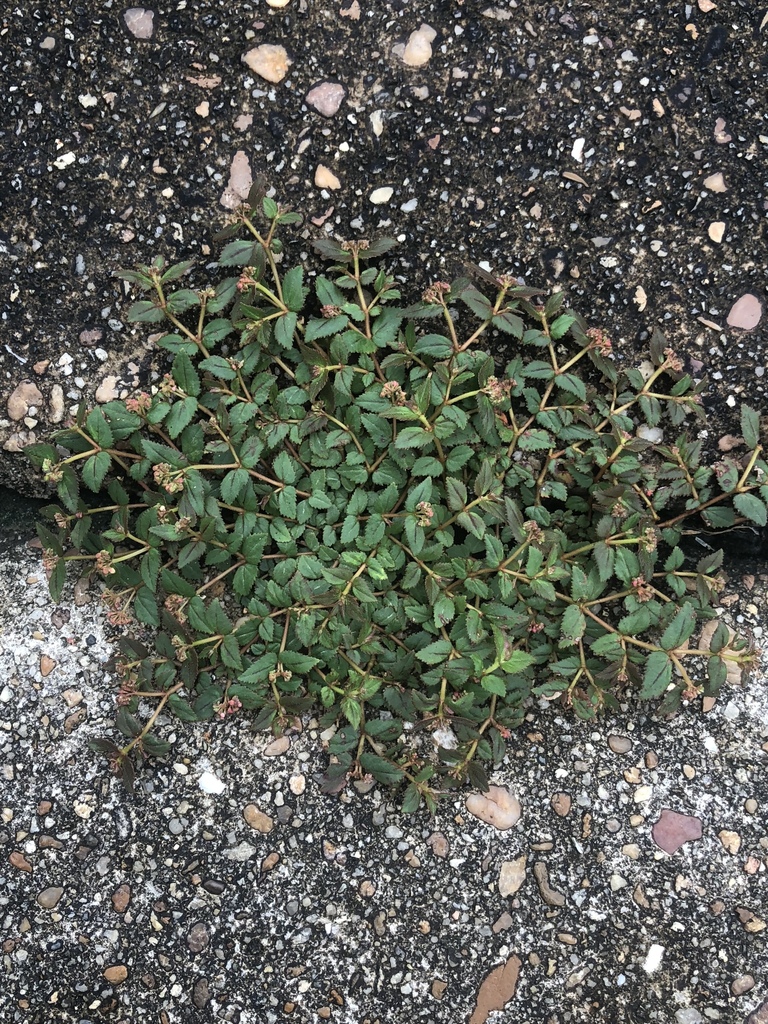
Photo credit (left): Jay Keller (click here for observation). Photo credit (right): howardhorne (click here for observation).
Euphorbia humistrata - Like E. maculata but with longer style branches and stems that often root at the nodes closest to the base of the plant (I have seen one E. maculata root from the stems when buried in wet sand and it rooted at the internodes, not the nodes). The leaves are typically broader near the apex, but this is variable. The cyathia and fruits are usually pinker, but don't be misled by this characteristic as E. maculata often has pink cyathia and fruit as can be found here and here. It is worth noting that any late season stressed plant within this section may produce shorter styles. Therefore, if you compare a late season stressed E. humistrata with a non-stressed E. maculata, the styles can be of the same length. If you think a plant is late season stressed and it doesn't root at the nodes, it is possible to distinguish the two by the seeds (see discussion on extracting and photographing seeds here). The seeds of E. maculata have several rounded ridges, while those of E. humistrata have none.
Euphorbia humistrata appears to be restricted to edges of lakes and has currently only been found in two localities: Simonds Lake Park (observations here and here) and Valley Creek Park (observations here and here). It is fairly safe to assume that any weedy plant away from a persistant body of water is E. maculata.
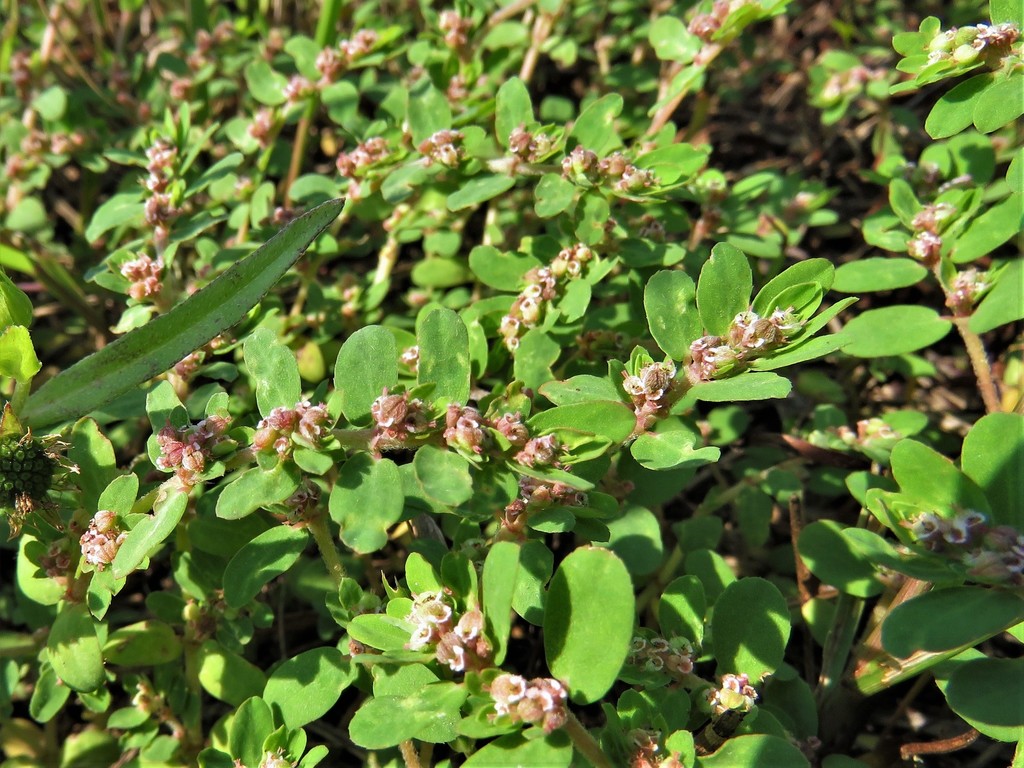
Photo credit: Annika Lindqvist (click here for observation).
Euphorbia maculata - Identification information here. Information about the "spot" here. Upper right photo: E. maculata (left), E. prostrata (center), E. stictospora (right).
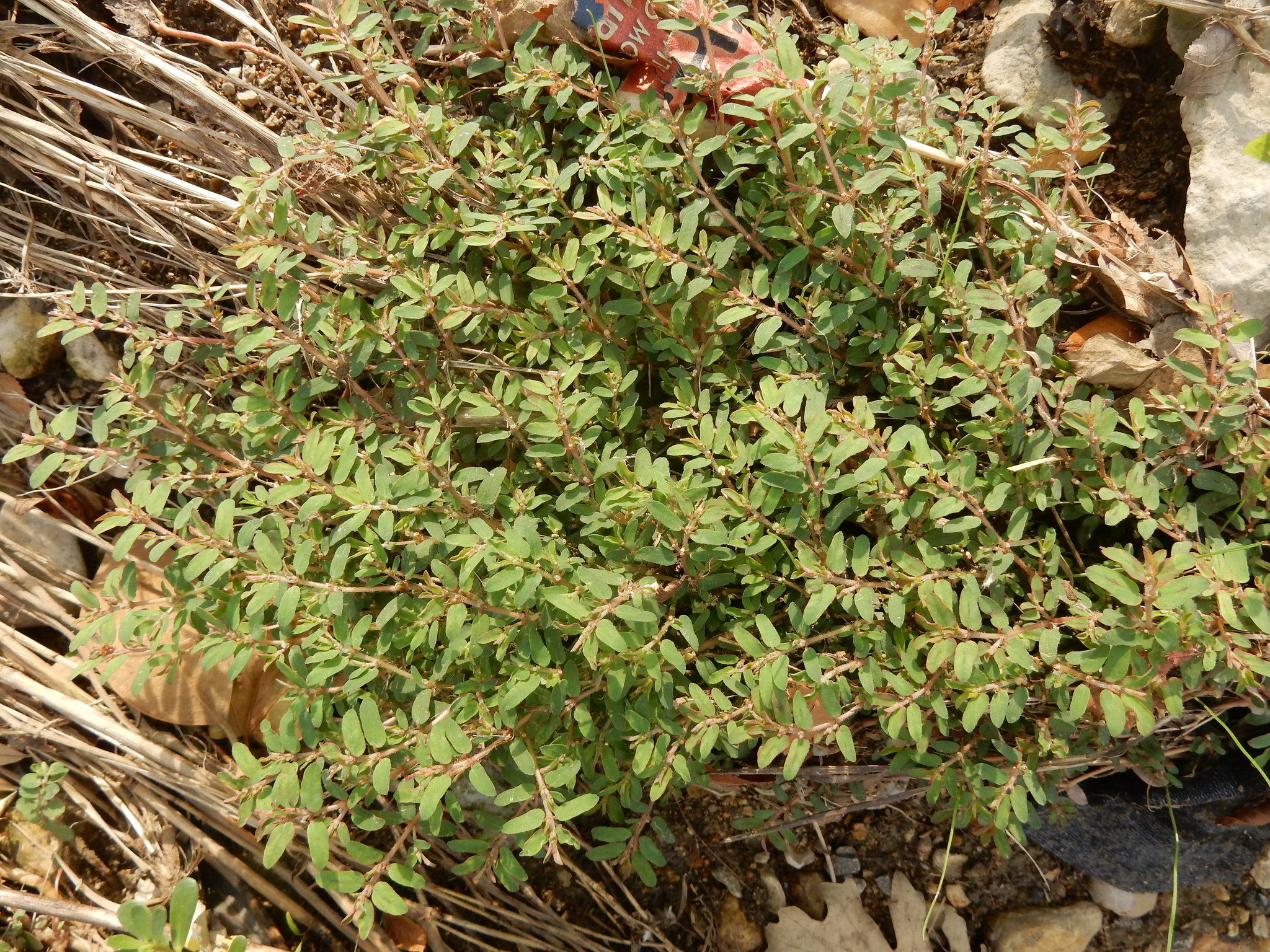
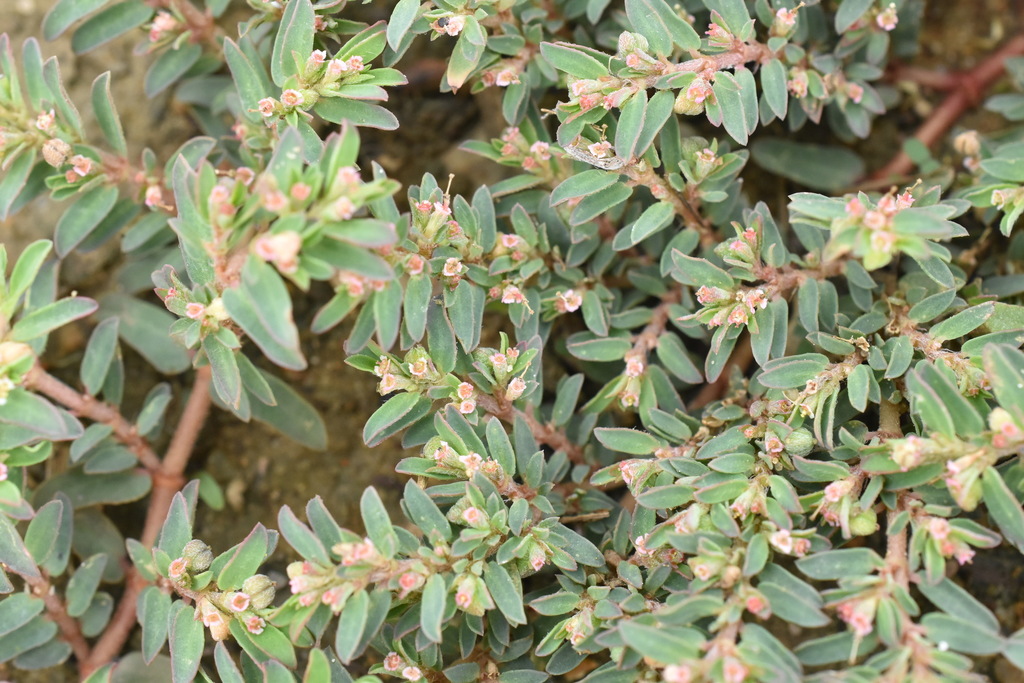
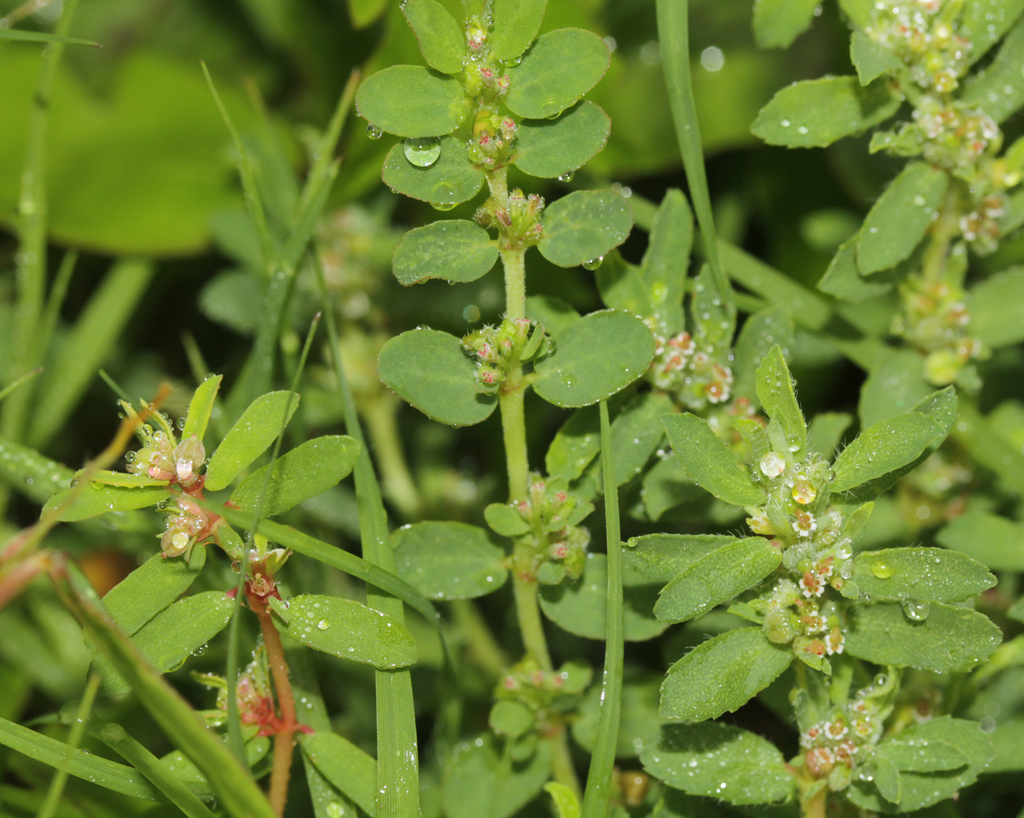
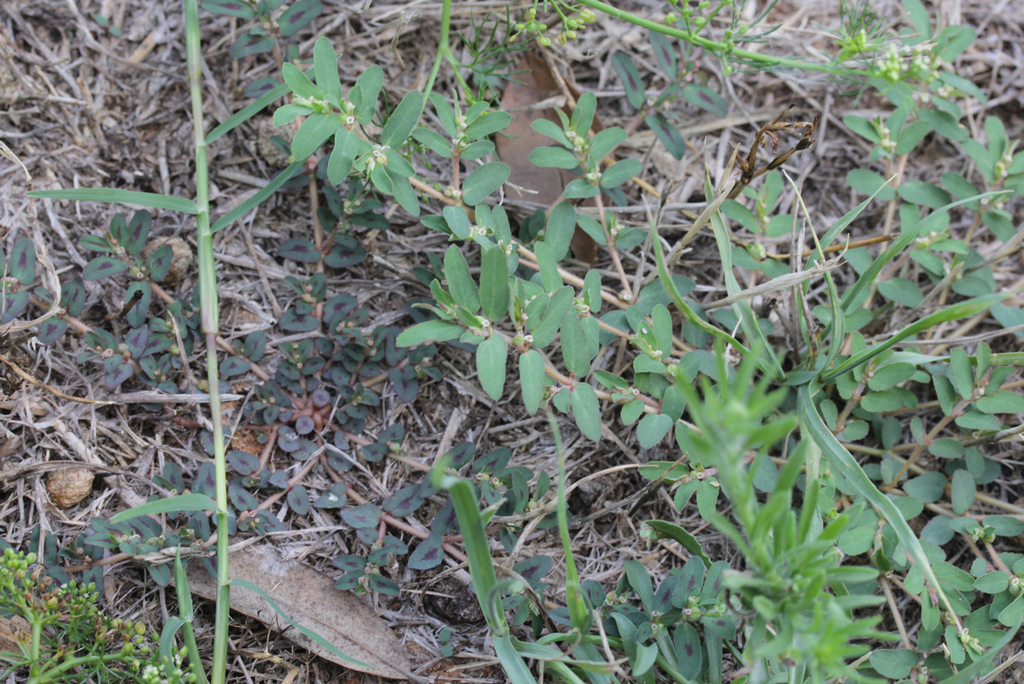
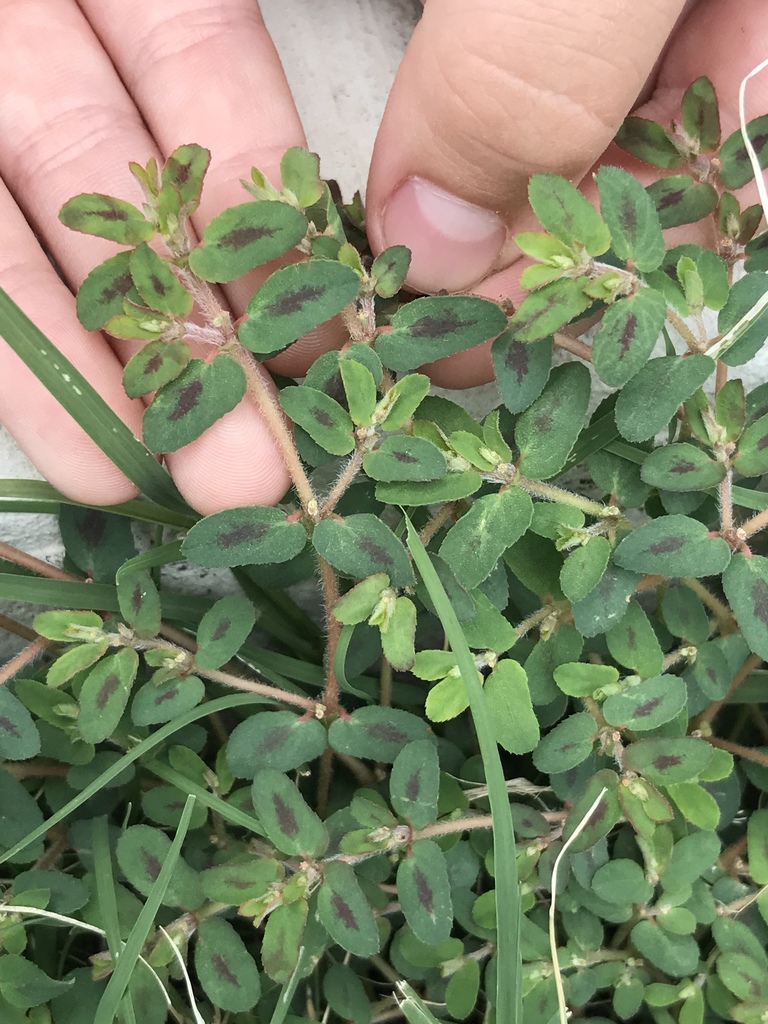

Photo credit (upper left): Bob O'Kennon (click here for observation). Photo credit (upper center): Adam Cochran (click here for observation). Photo credit (upper right): Nathan Taylor (click here for observation; photo includes E. maculata, E. prostrata, and E. stictospora). Photo credit (lower left): Nathan Taylor (click here for observation). Photo credit (lower center): taharms48 (click here for observation).Photo credit (lower right): sehnature (click here for observation).
E. stictospora - Identification information here. Lower photo: E. maculata (left), E. prostrata (center), E. stictospora (right).



Photo credit (left): sehnature (click here for observation). Photo credit (right): Sam Kieschnick (click here for observation). Photo credit (lower): Nathan Taylor (click here for observation; photo includes E. maculata, E. prostrata, and E. stictospora).
E. prostrata - Identification information here. Lower right photo: E. maculata (left), E. prostrata (center), E. stictospora (right).
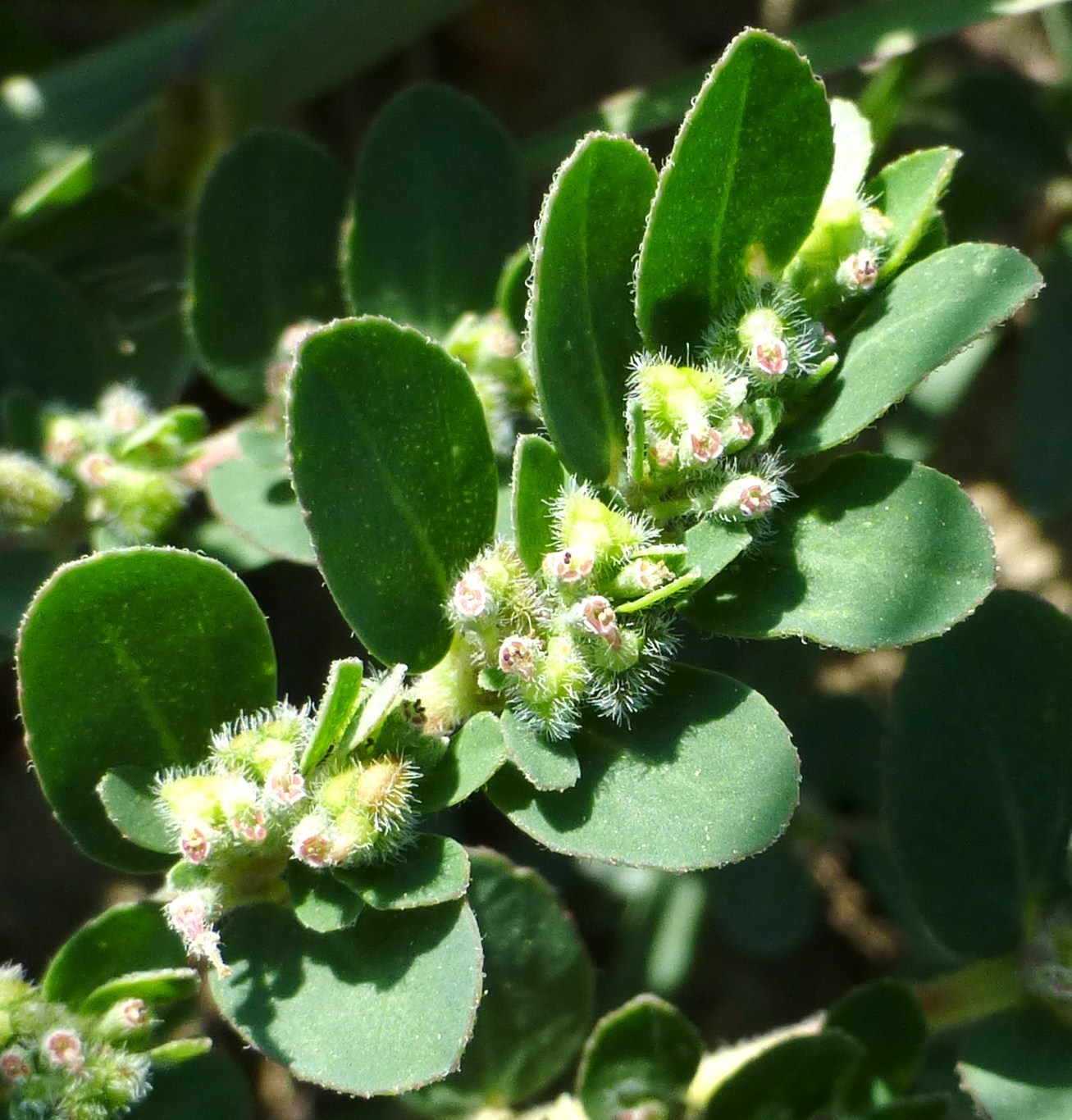
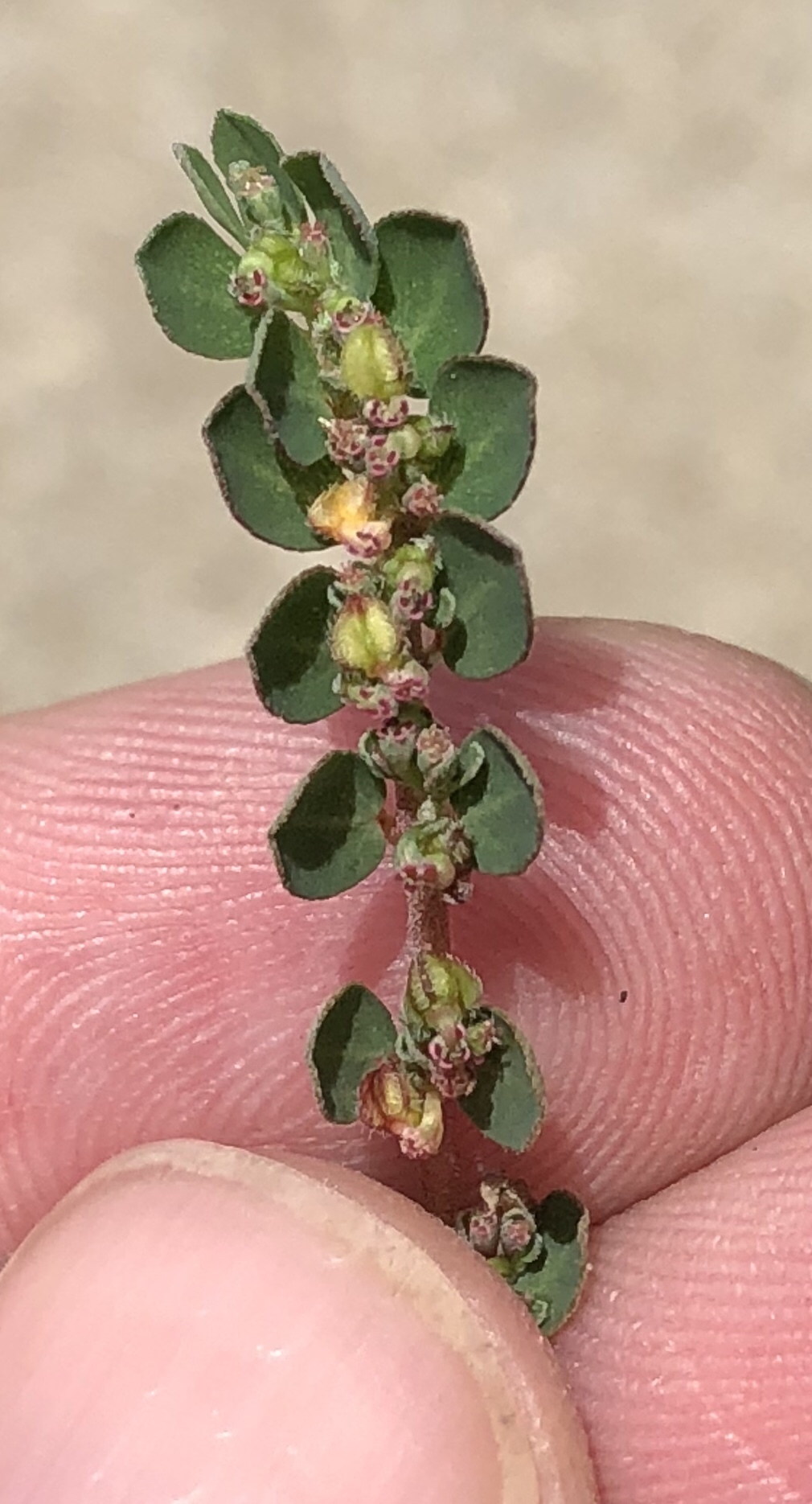
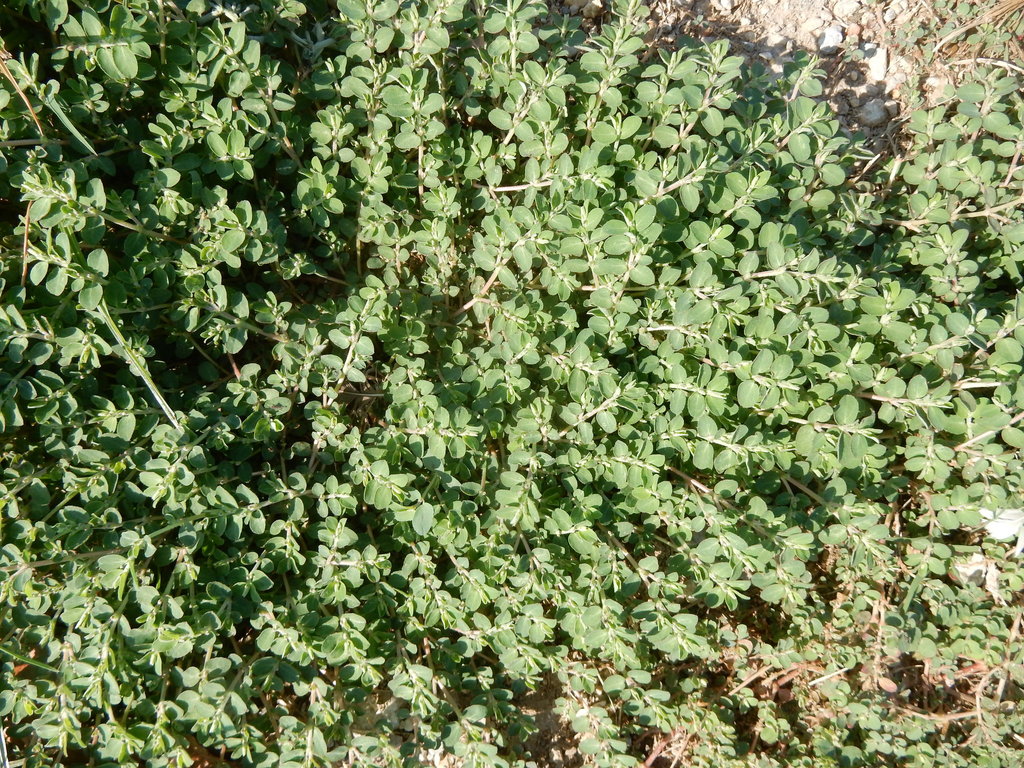

Photo credit (upper left): Sam Kieschnick (click here for observation). Photo credit (upper center): sehnature (click here for observation). Photo credit (upper right): Sam Kieschnick (click here for observation). Photo credit (lower left): Bob O'Kennon (click here for observation). Photo credit (lower right): Nathan Taylor (click here for observation; photo includes E. maculata, E. prostrata, and E. stictospora).
E. serpens - Identification information here.
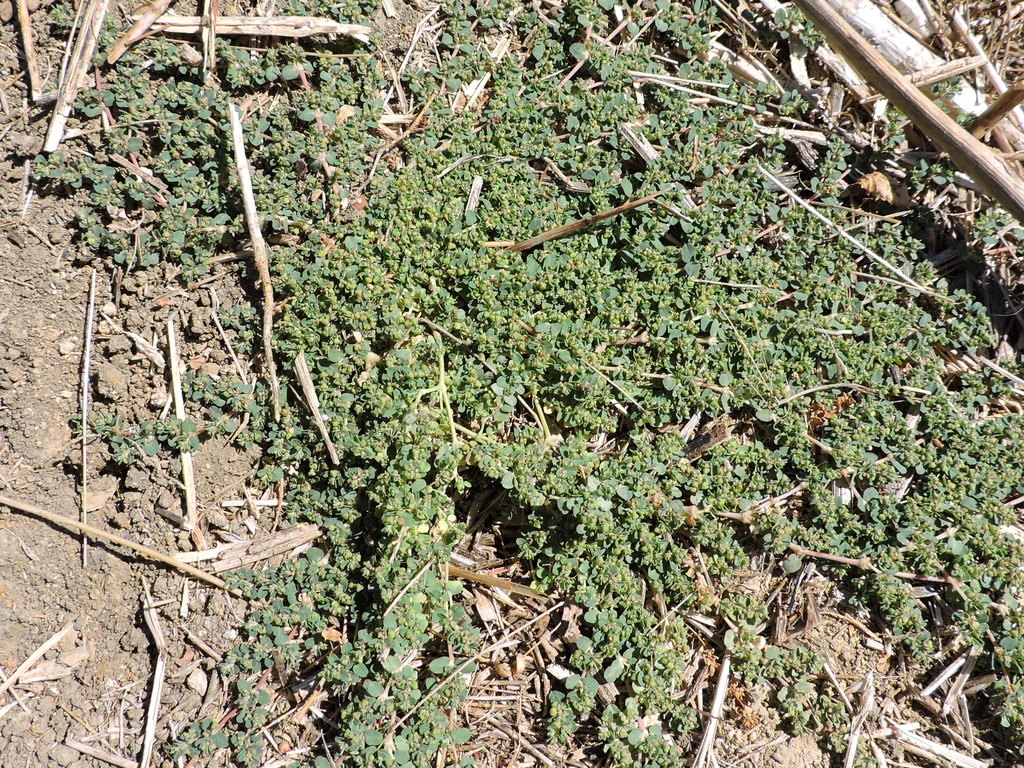


Photo credit (upper left): Sam Kieschnick (click here for observation). Photo credit (upper right): Sam Kieschnick (click here for observation). Photo credit (lower left): sehnature (click here for observation). Photo credit (lower right): mkc123 (click here for observation).
E. glyptosperma - Identification information here.
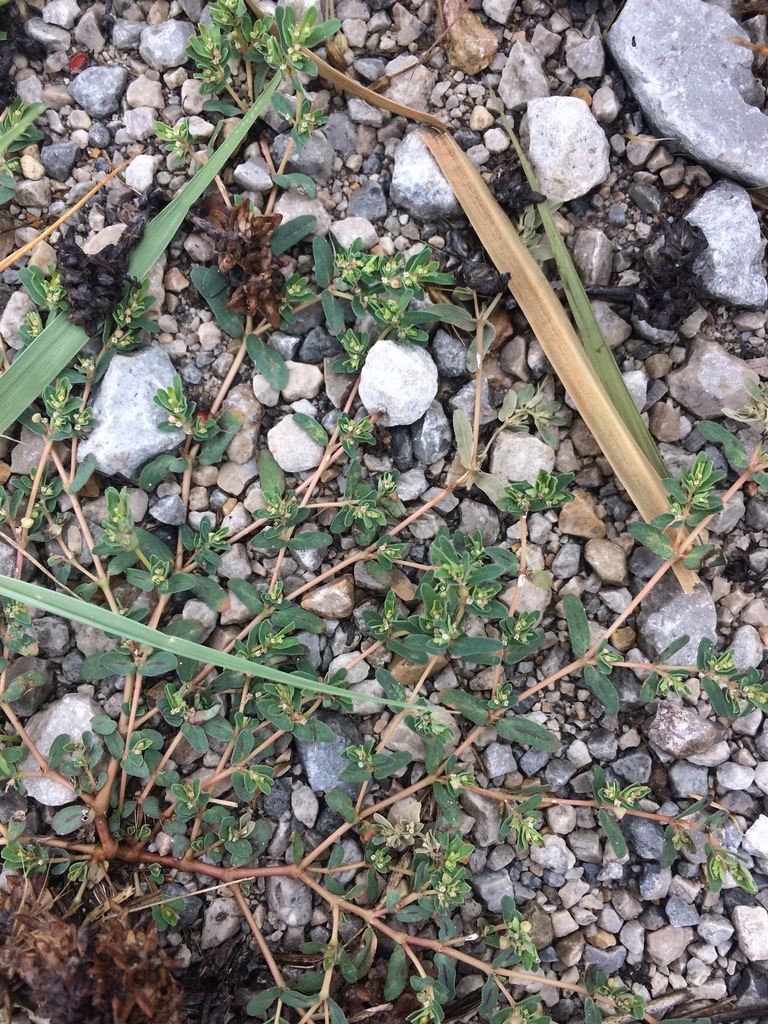
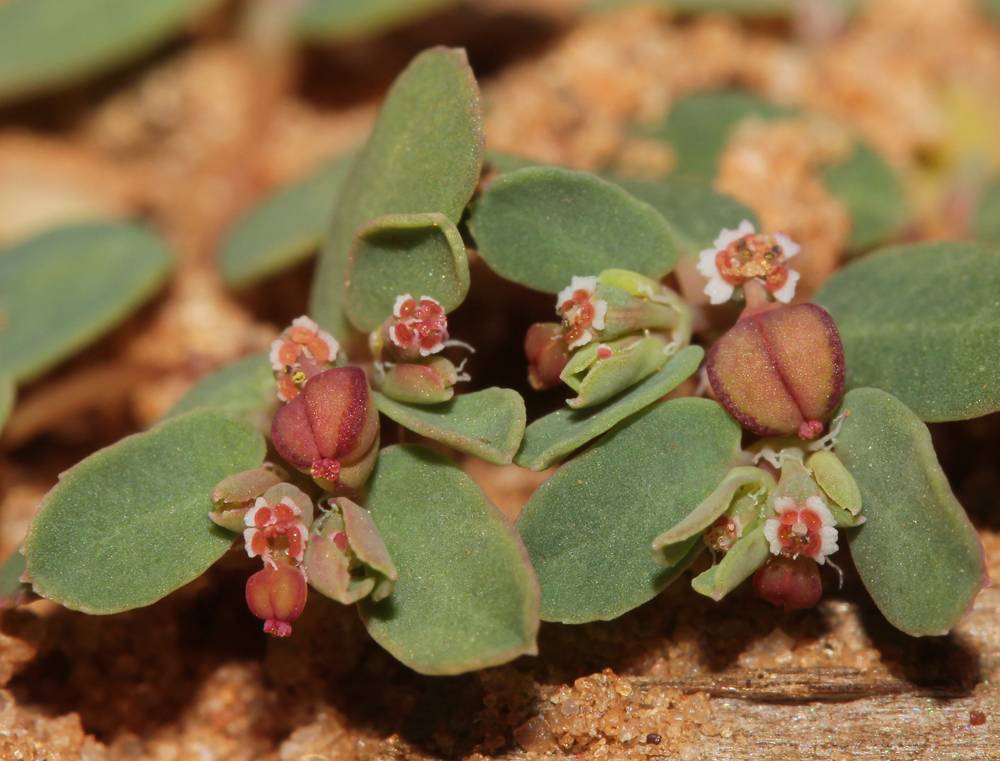
Photo credit (both): Nathan Taylor (observatins here and here).
E. cordifolia
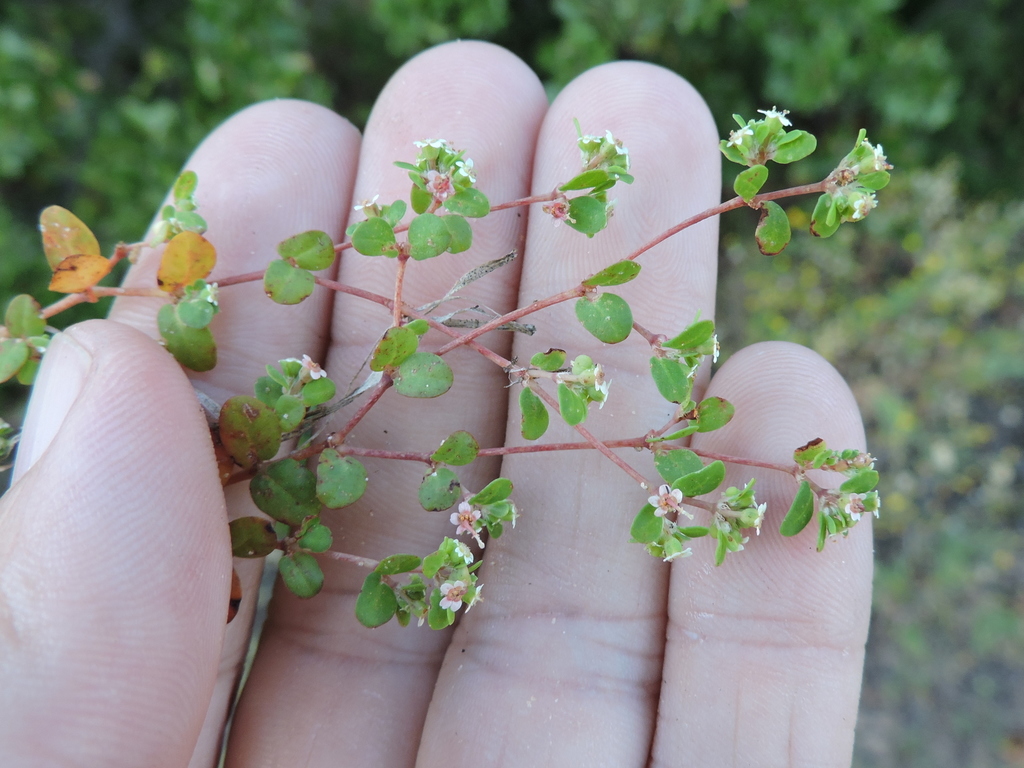
Photo credit (both): Sam Kieschnick (click here for observation).
E. missurica
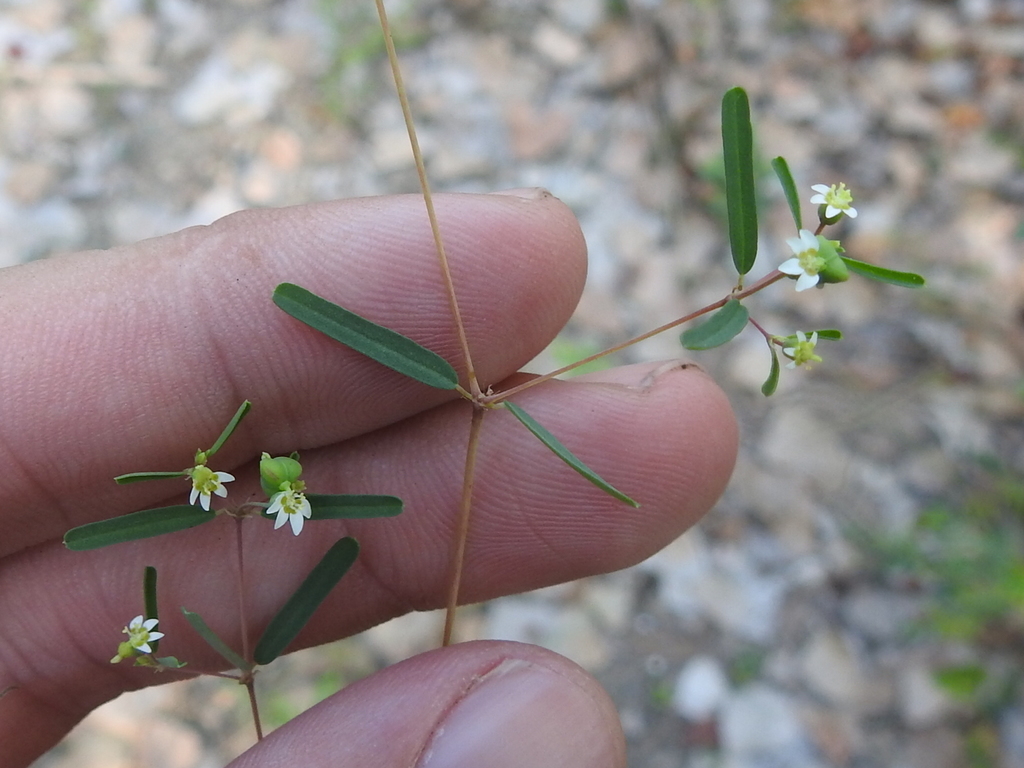
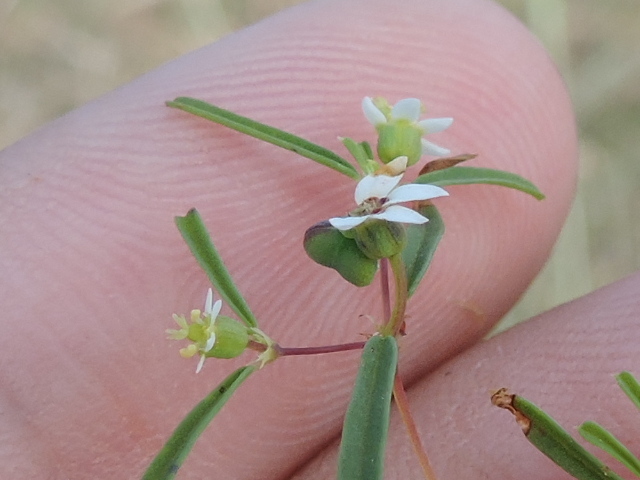
Photo credit (both): Sam Kieschnick (observations here and here).

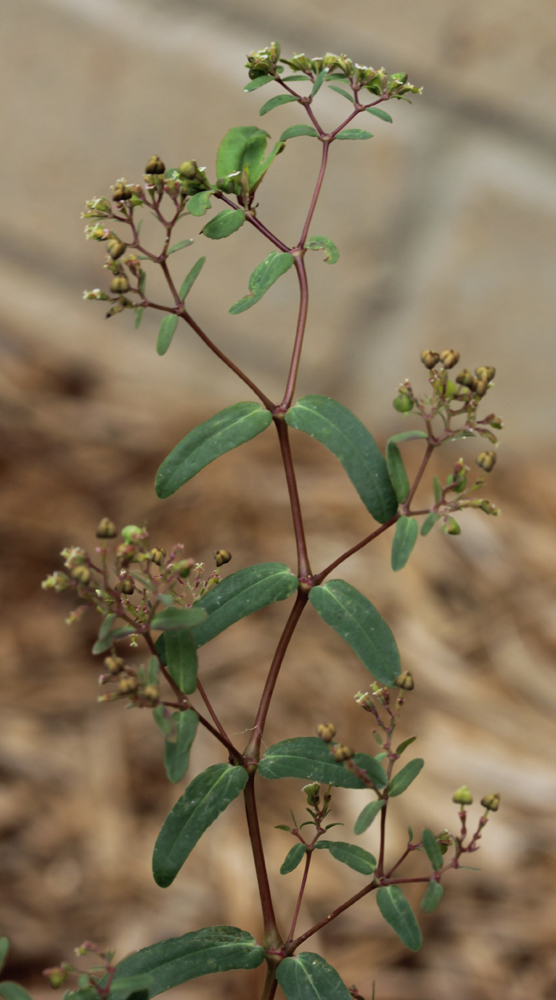
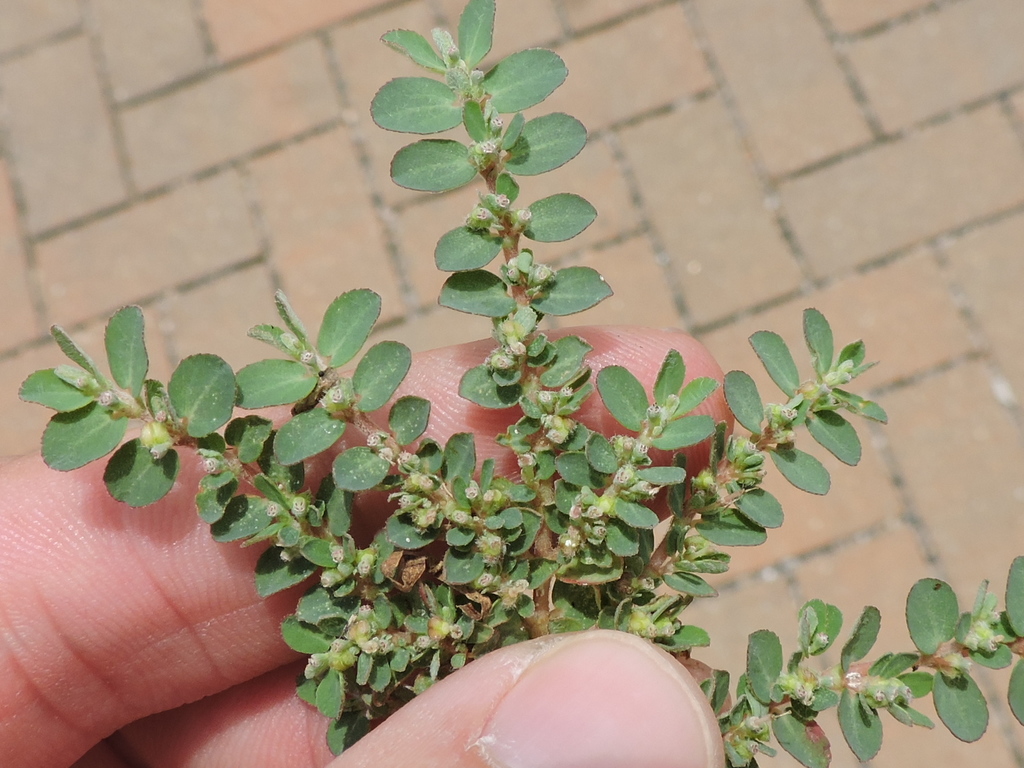
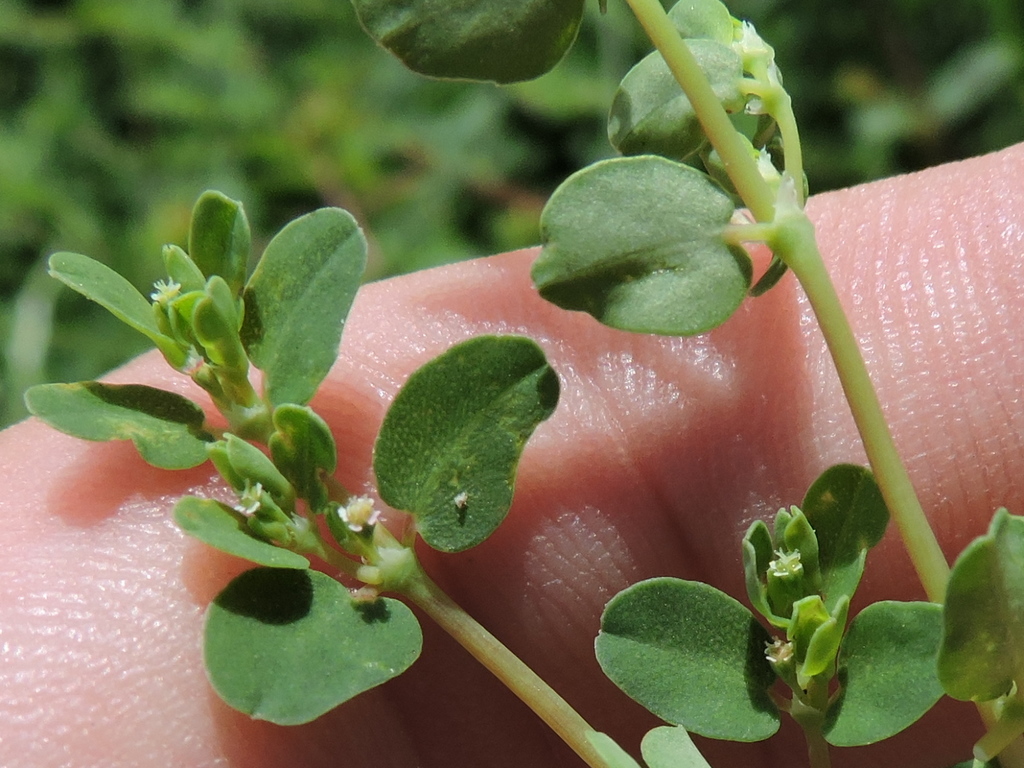
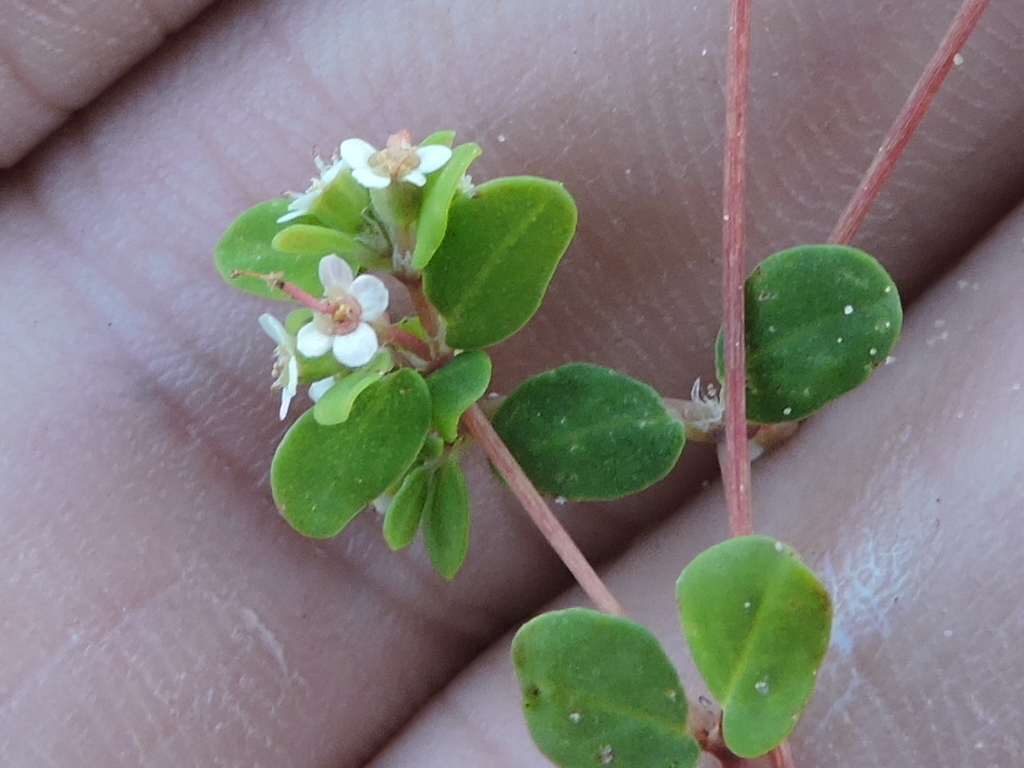





Comentarios
There you go @sambiology. :-)
OK, yeah. This is good. Like really really good. :-D
Tagging some of the folks that will likely bookmark this! Let's watch for spurges!!! And this journal entry will really help me ID more of them made in the area too. Nathan, you're the best!!!
@kimberlietx @suz @itmndeborah @sehnature @tadamcochran @lisa281 @annikaml @walkingstick2 @mertmack1 @rick57 @squaylei2000 @bob777 @wildcarrot @andyk @cwd912nb @daniel112 @cameralenswrangler @mustardlypig @aguilita @sahi2018 @obidaddy @sonnia @brentano @charley
Thanks for the guide!
Ditto. I'll look more carefully now!
Nice! This will be very useful! Thanks Nathan!
Terrific work and very useful for those of us with spurge fear :) Thanks Nathan!
"spurge fear"! I love that!
Glad to know you all will put this to good use!
Great stuff, Nathan. Thanks!
Absolutely wonderful!! I went looking for the spurge guide the other day and couldn't find it. Def bookmarking!
If any of you are trying to find one of the spurge guides or posts that I've written, I've listed almost all of them here. It can be found at the bottom of the description of the Euphorbia species of the United States project. I also have a couple other projects which are on the list. I've added the most information to the Euphorbia species of the US project but may start working more on the Sandmats of the World project soon. The Euphorbia of Mexico project has stalled a little since I don't know Spanish and my collaborators didn't have as much time (for translating, etc.) as we had hoped.
Wow! Thanks Very much! This is very nice!
This is great!! Thanks!
How helpful! Thanks, @nathantaylor7583.
Thanks, I see these almost every time I step outside. This will certainly help.
Bookmarked! Thanks for putting this together, Nathan!
Well done Nathan, this is so so helpful! Thanks very much!!
Agregar un comentario